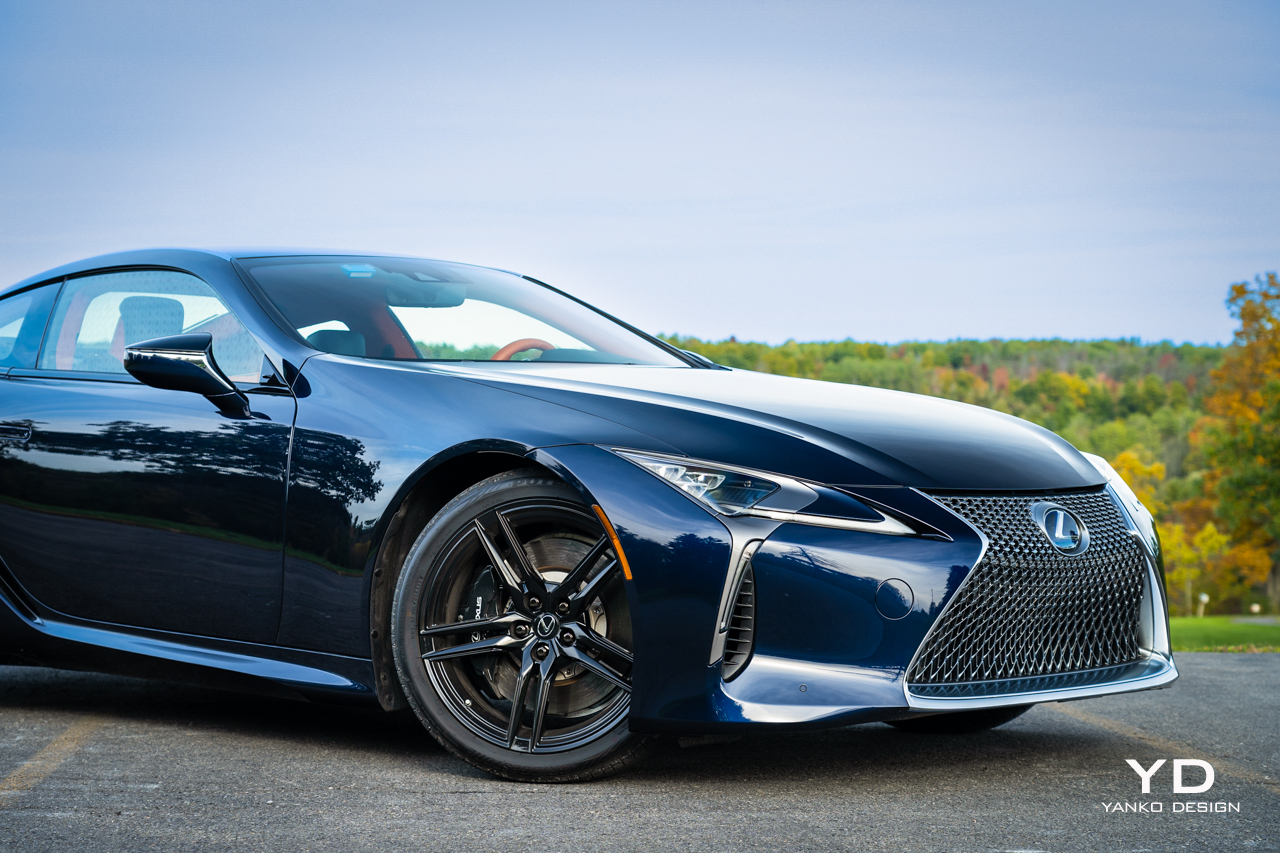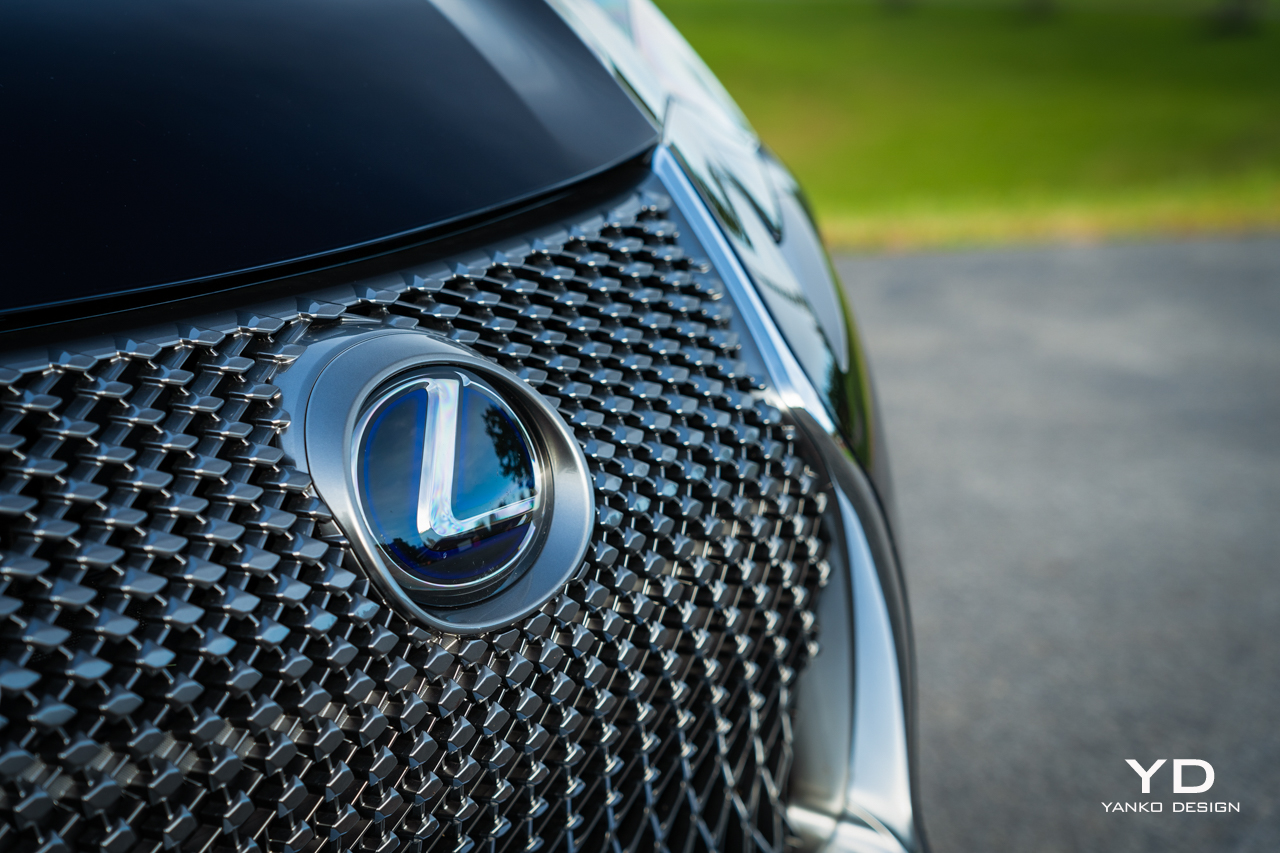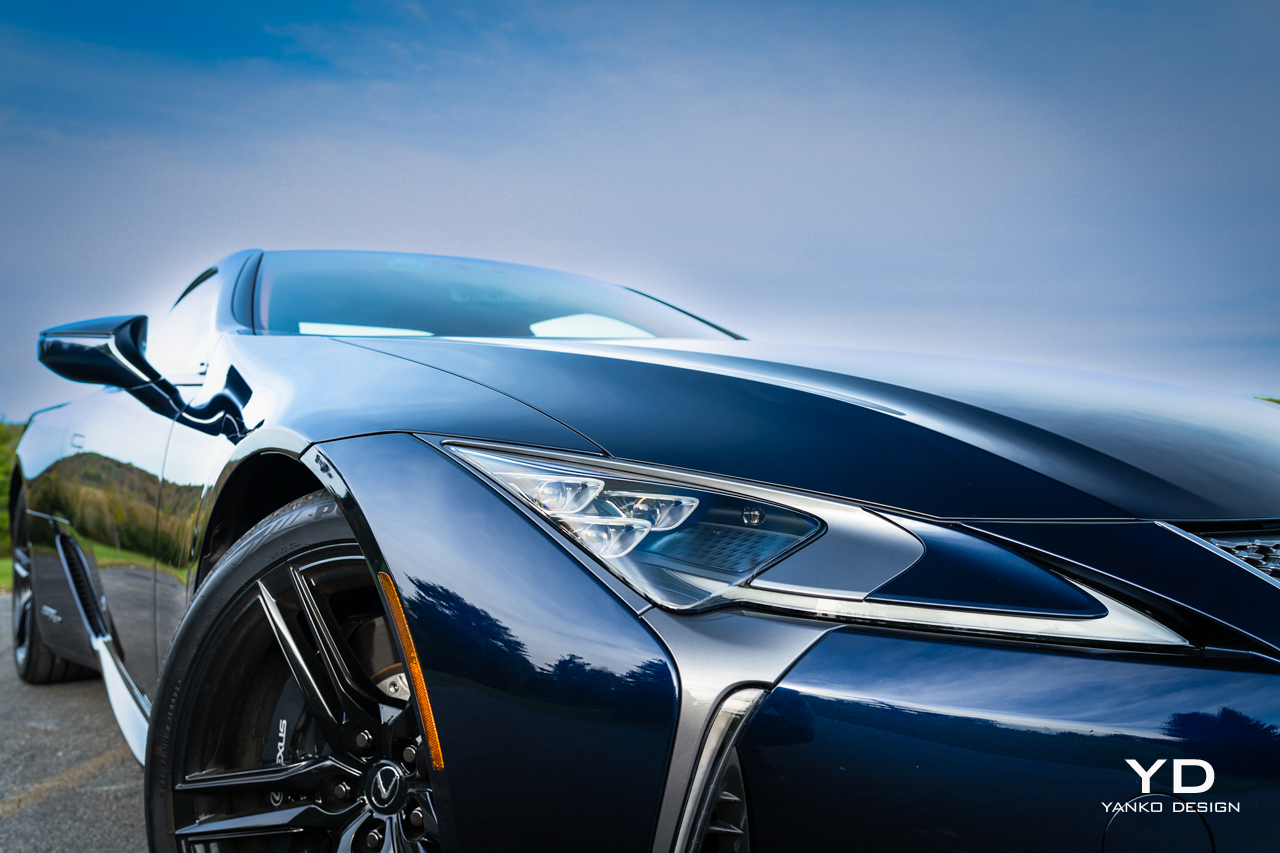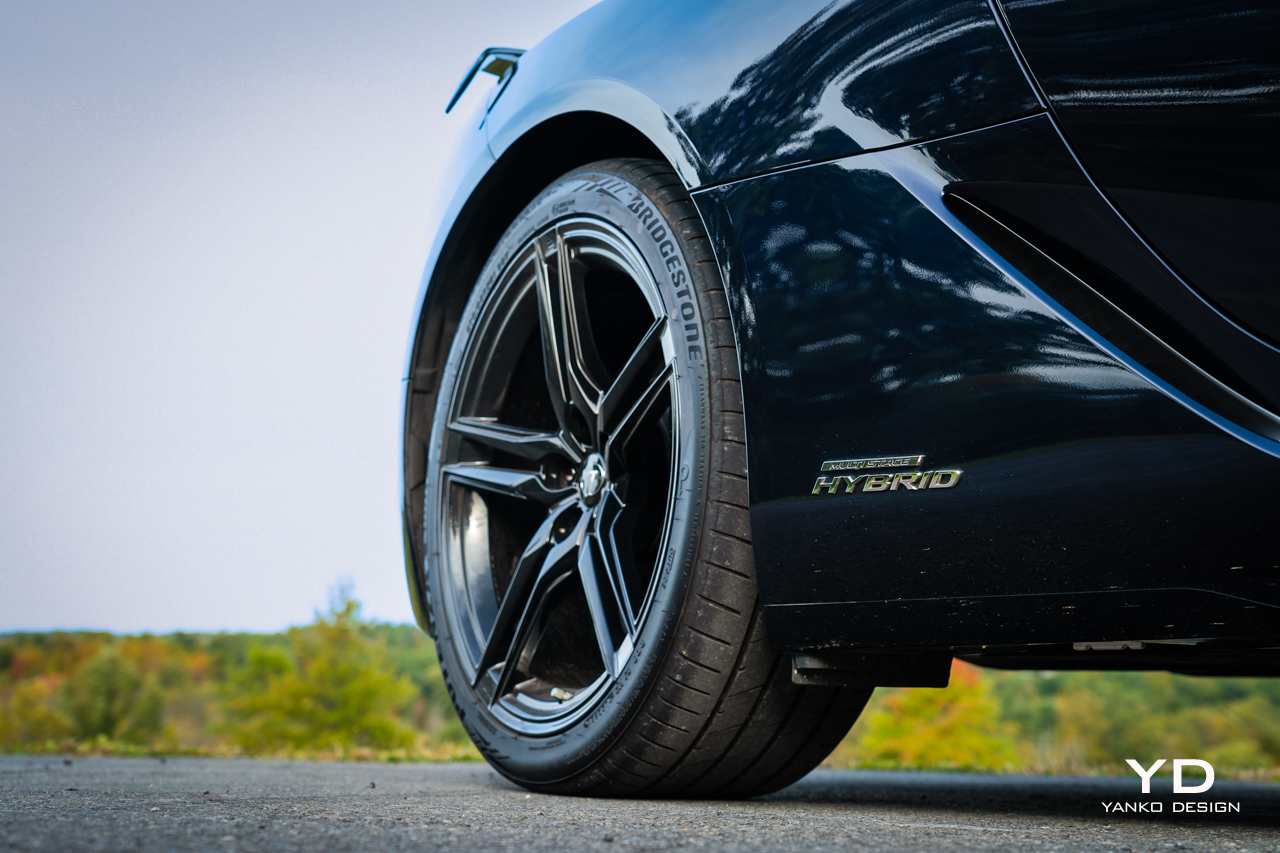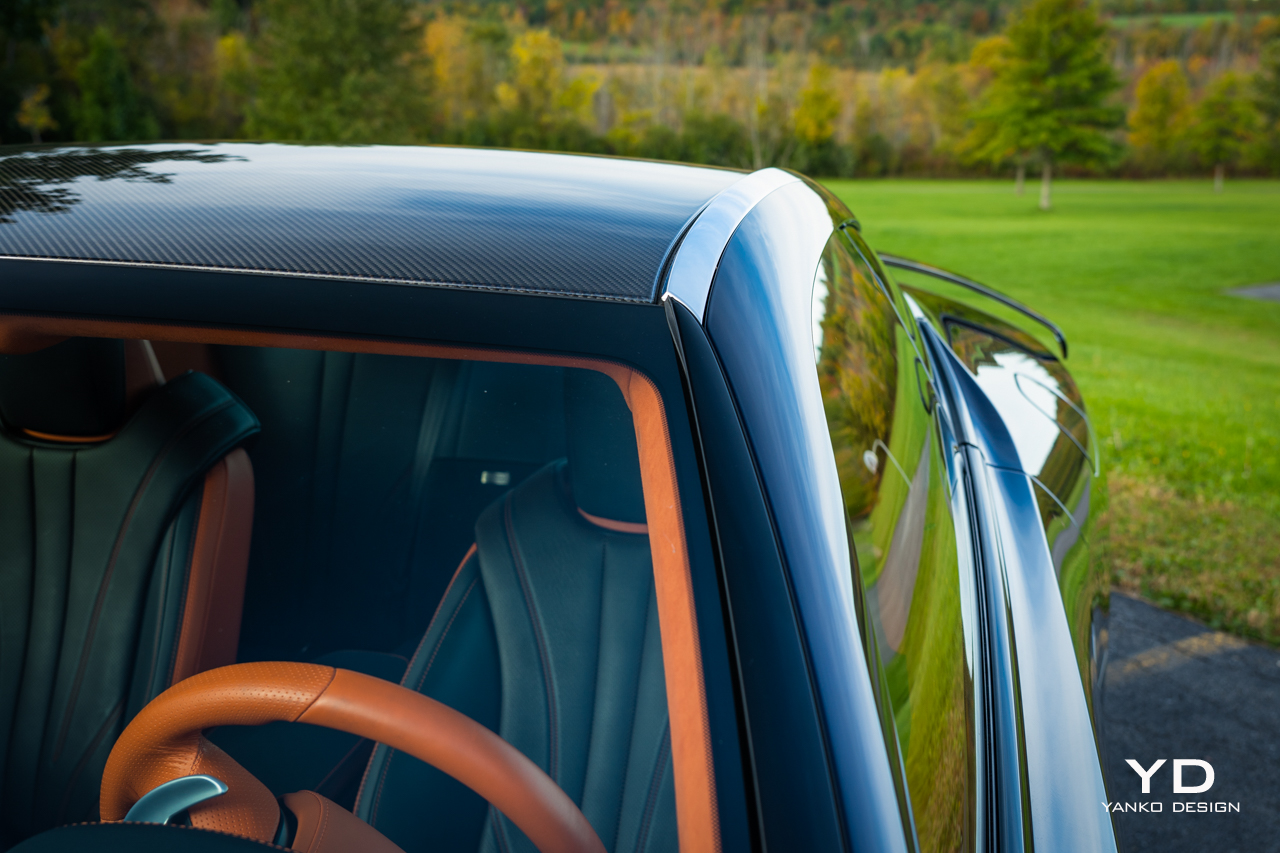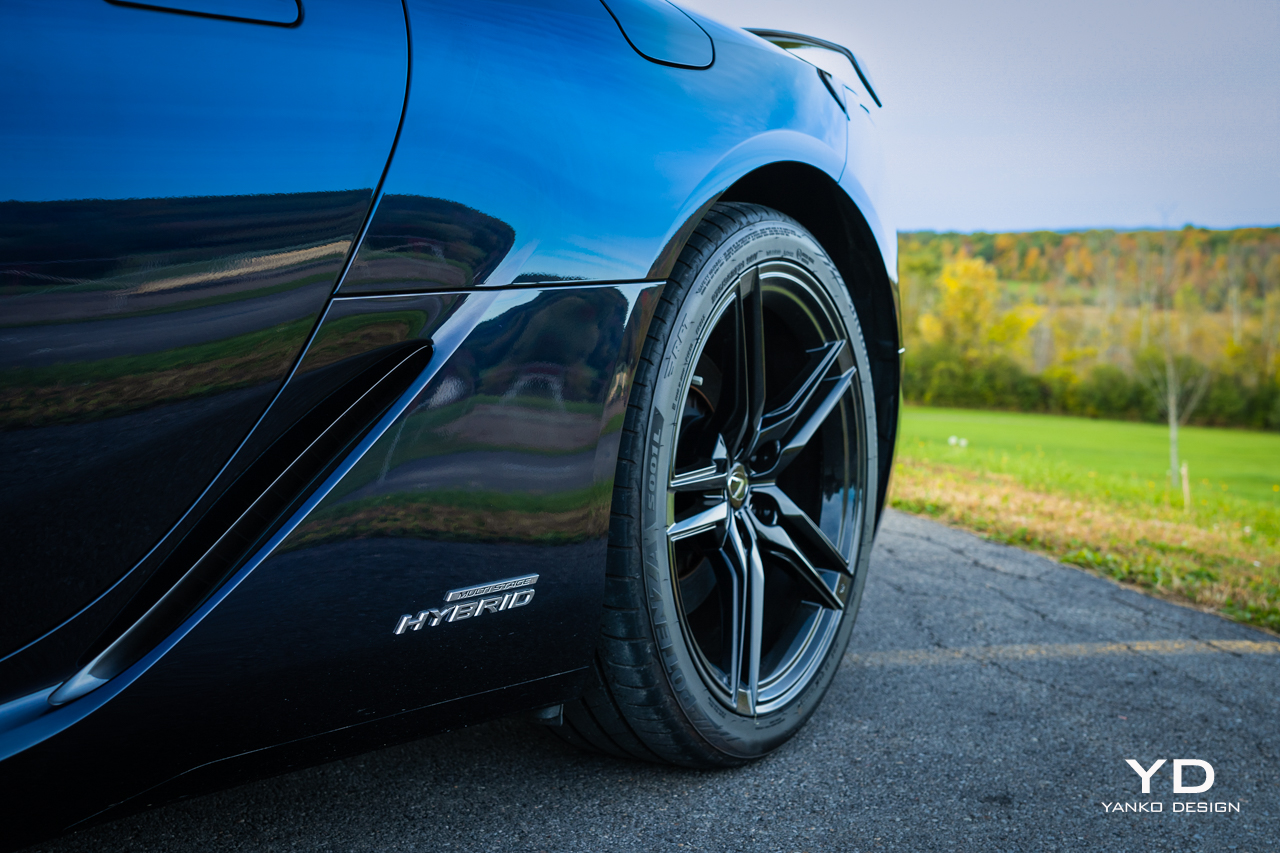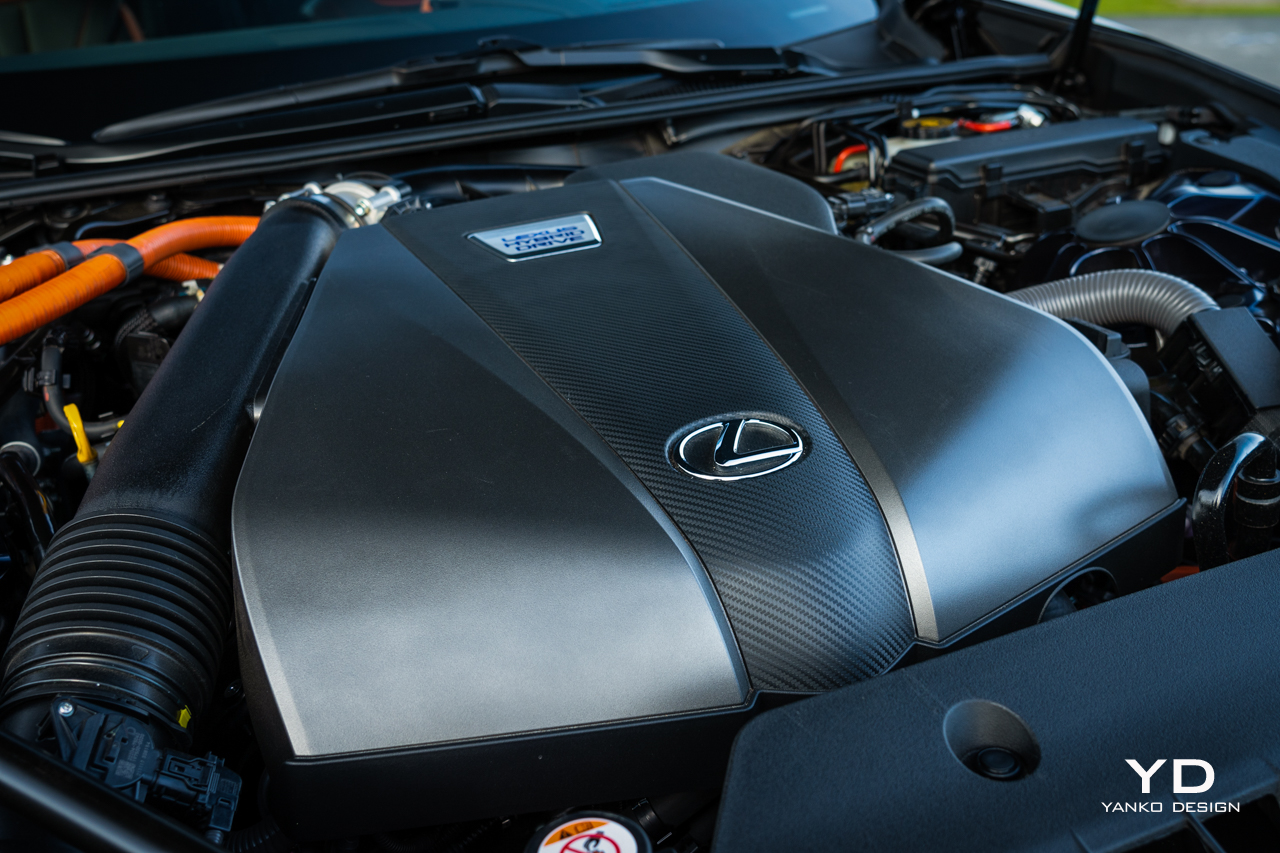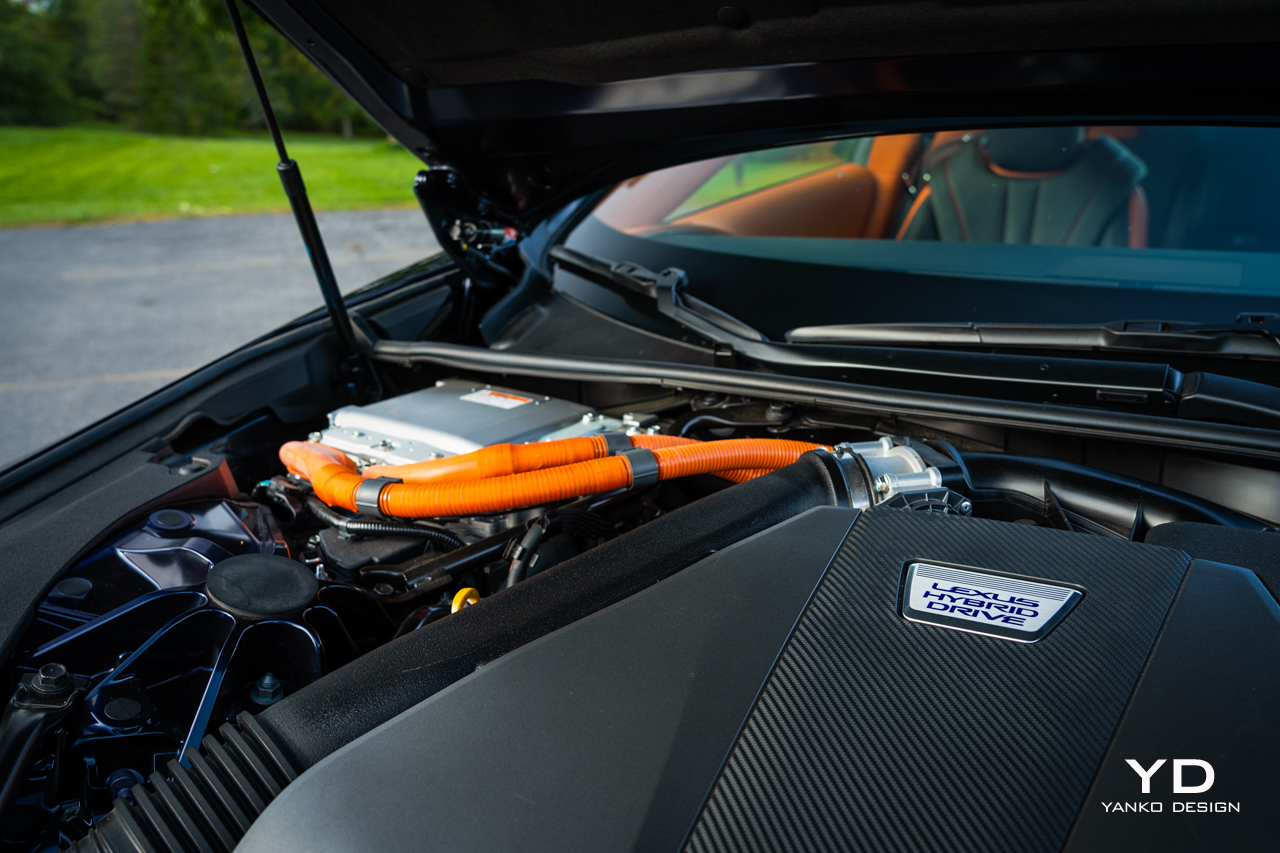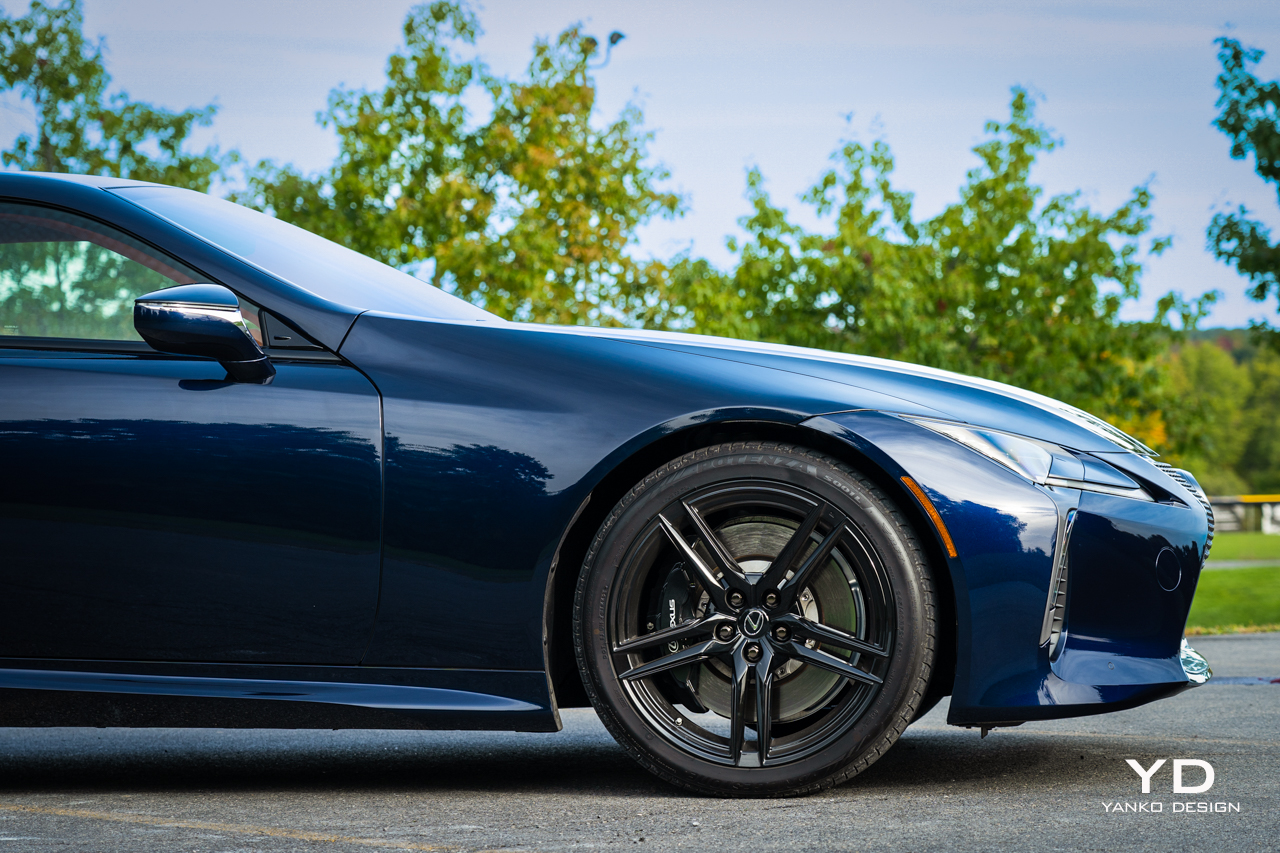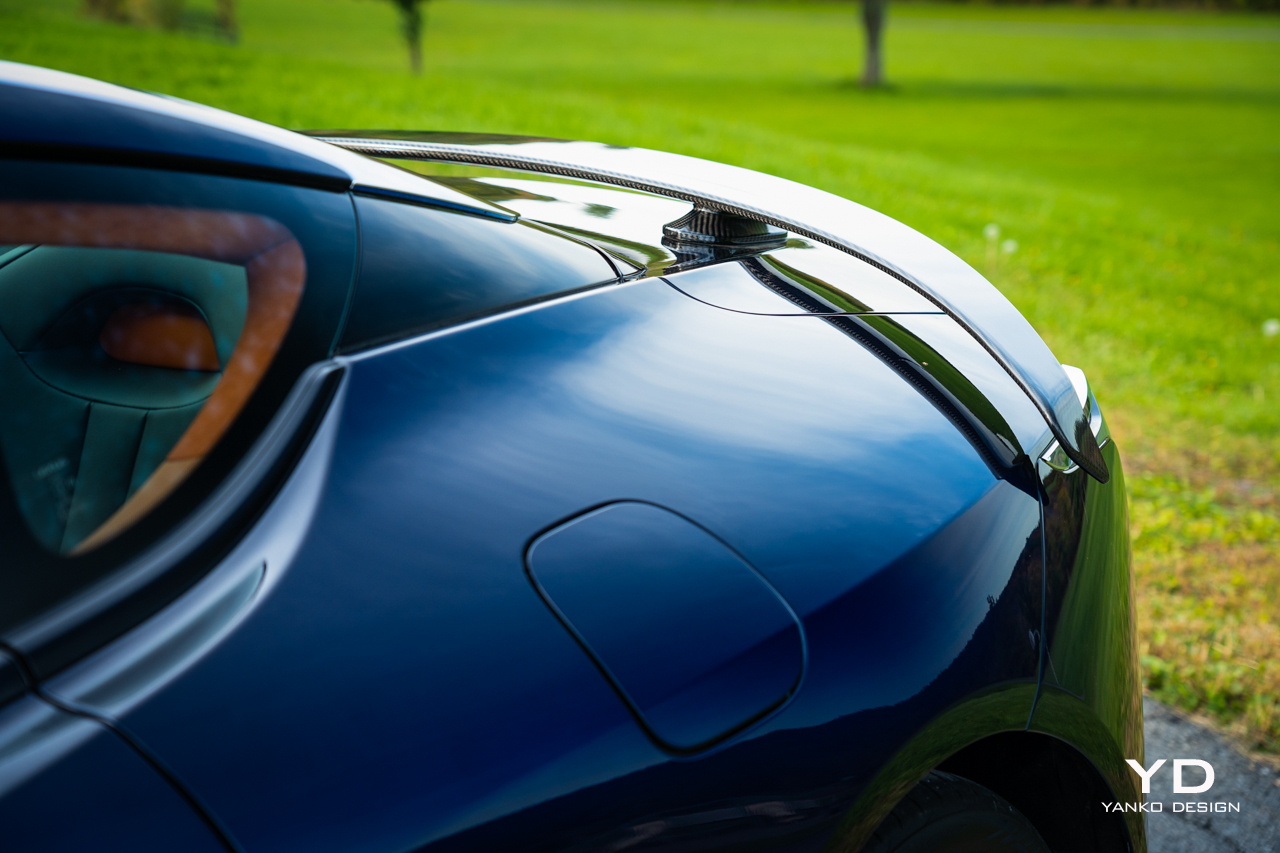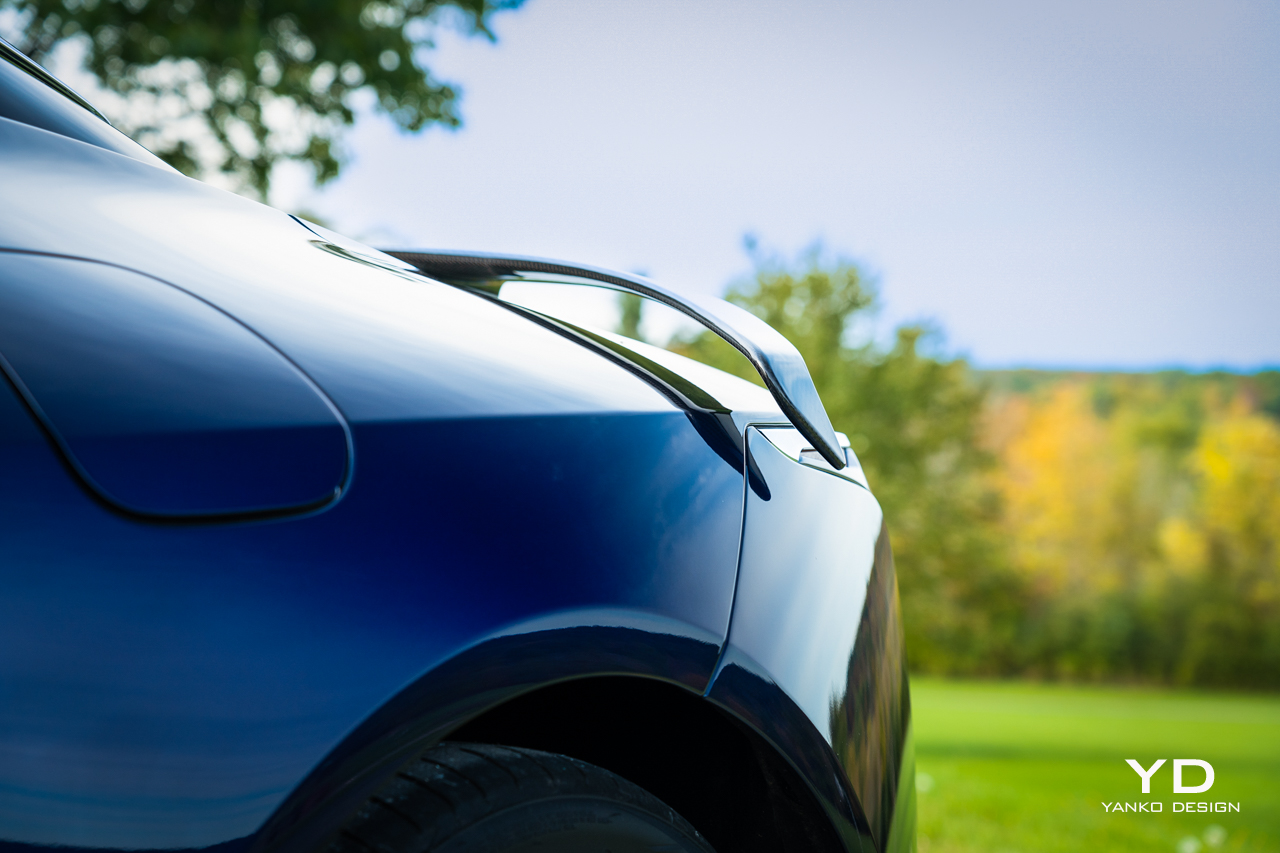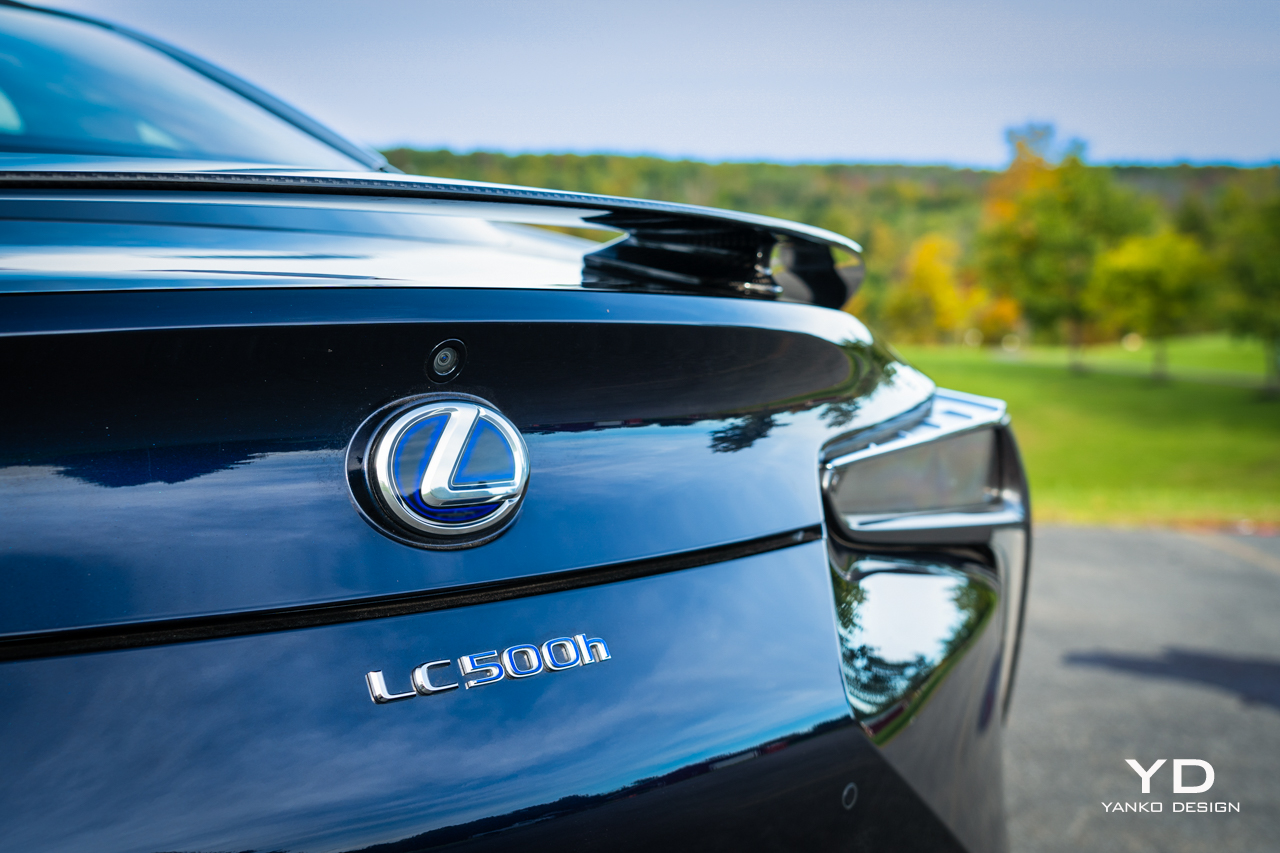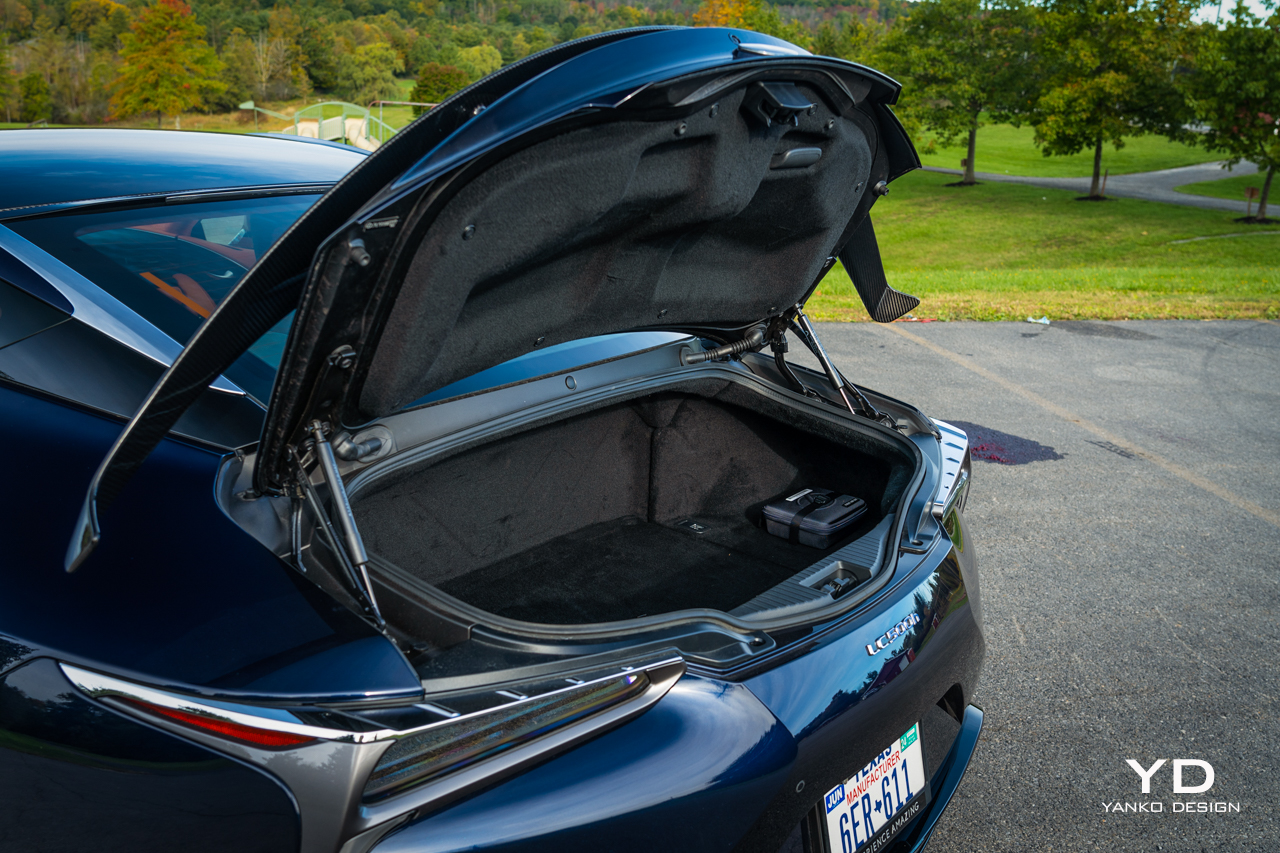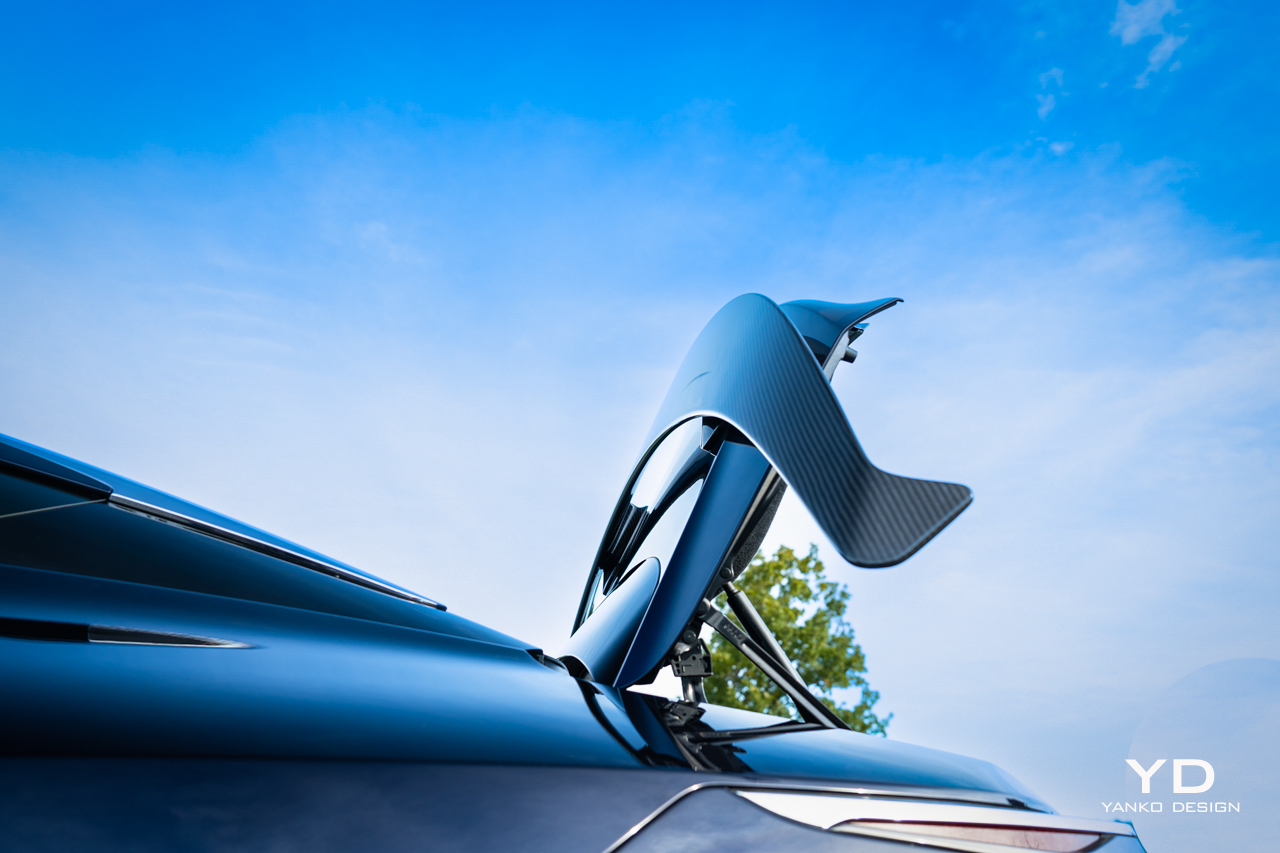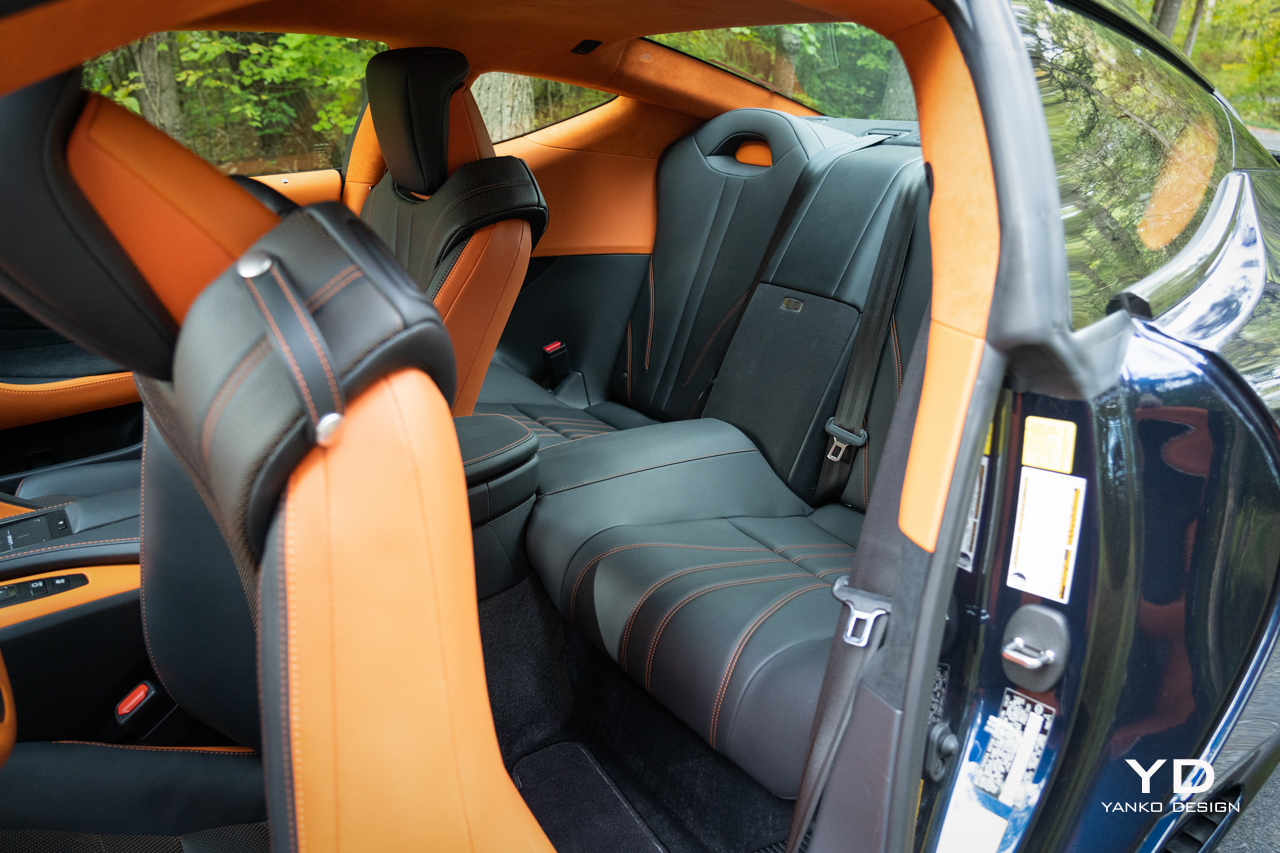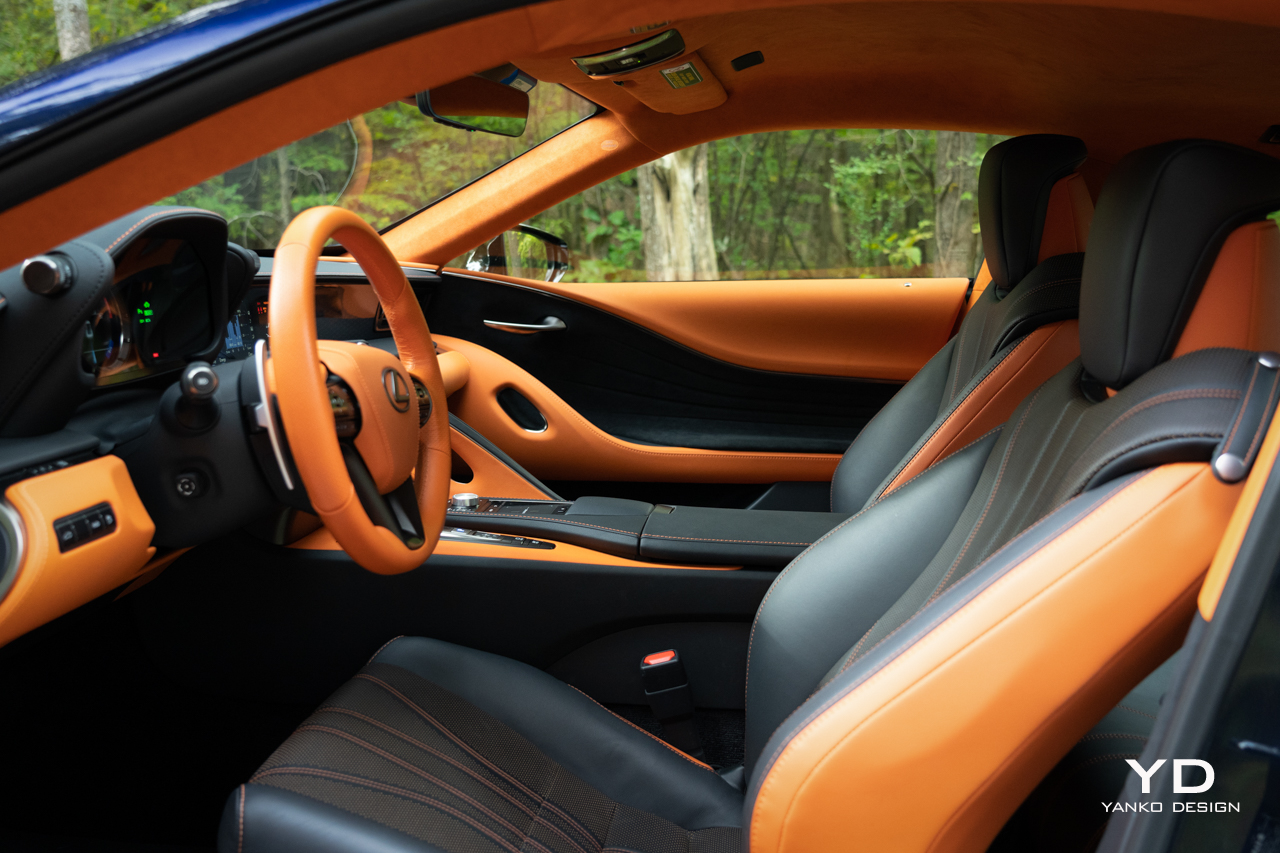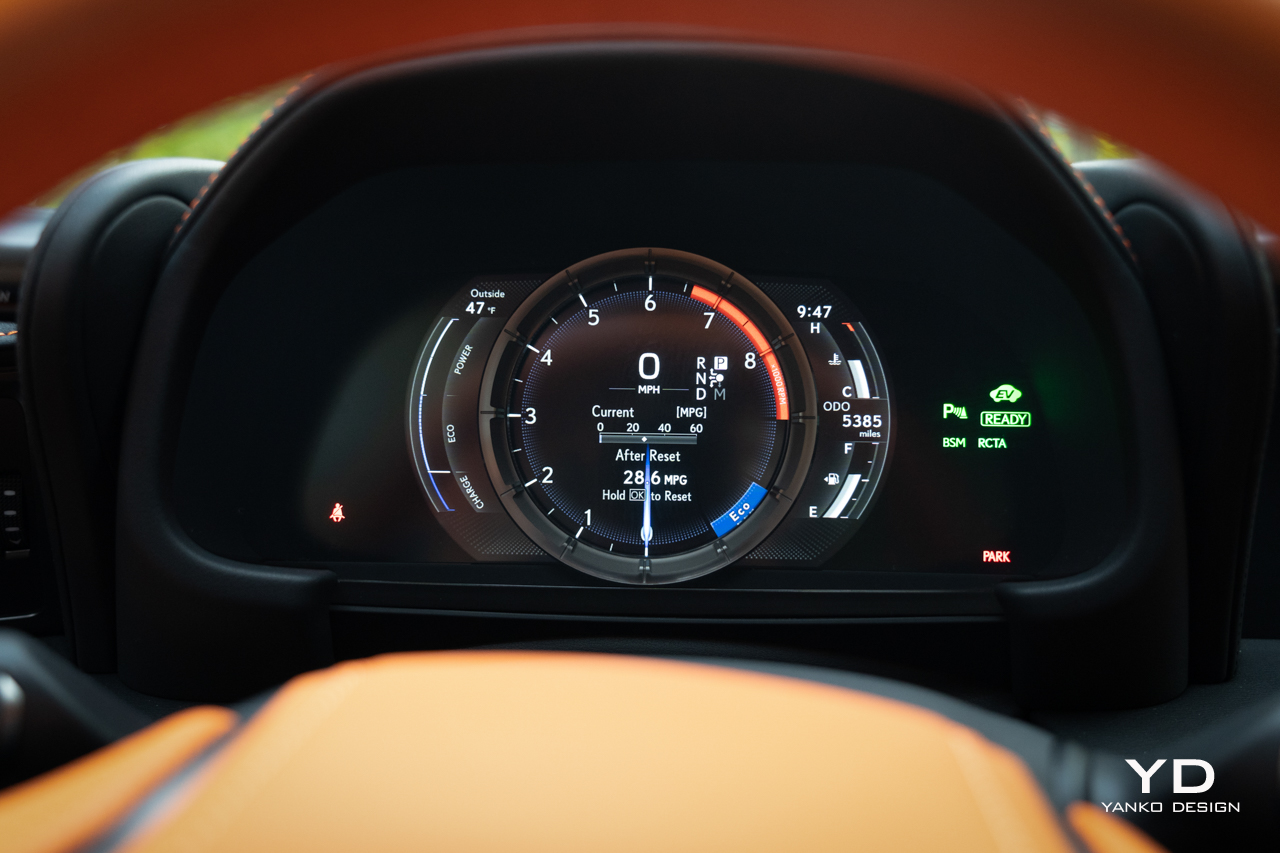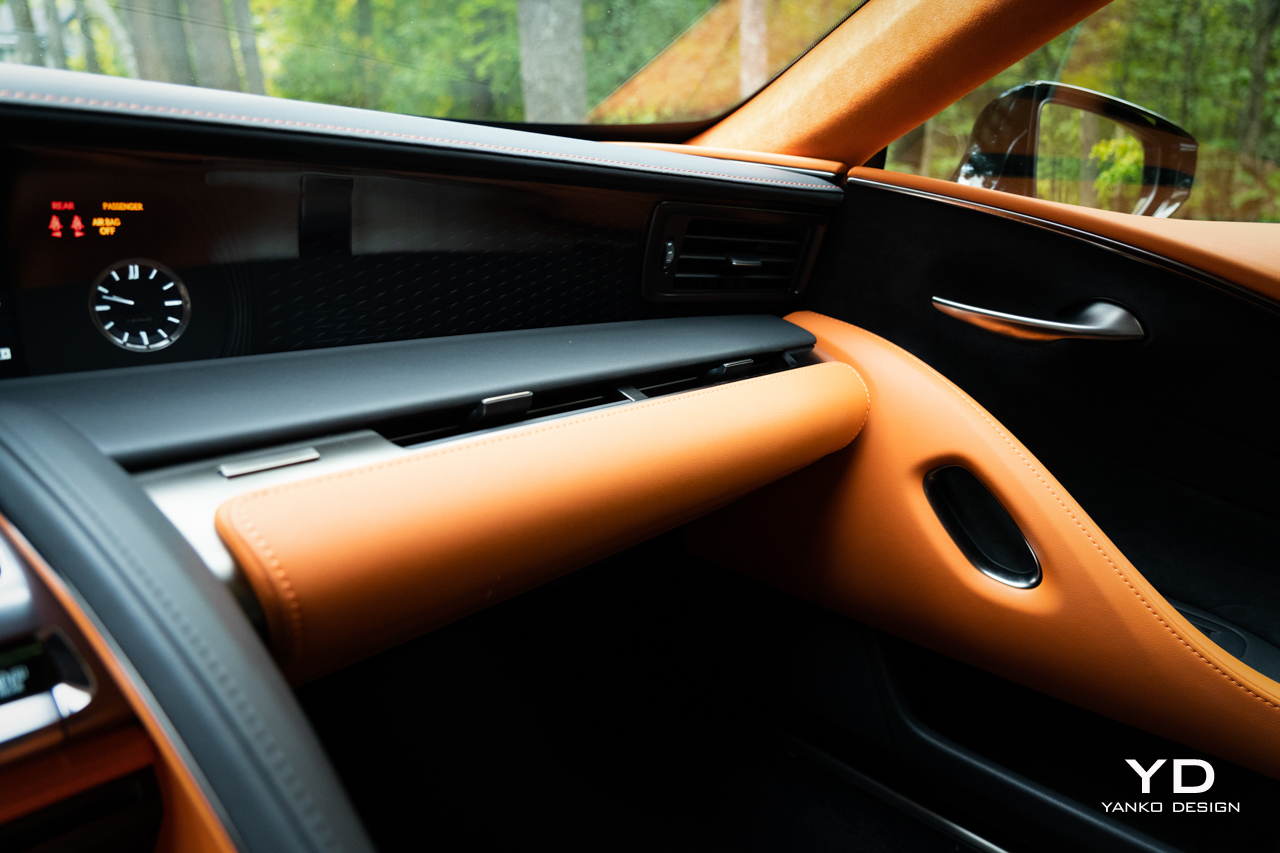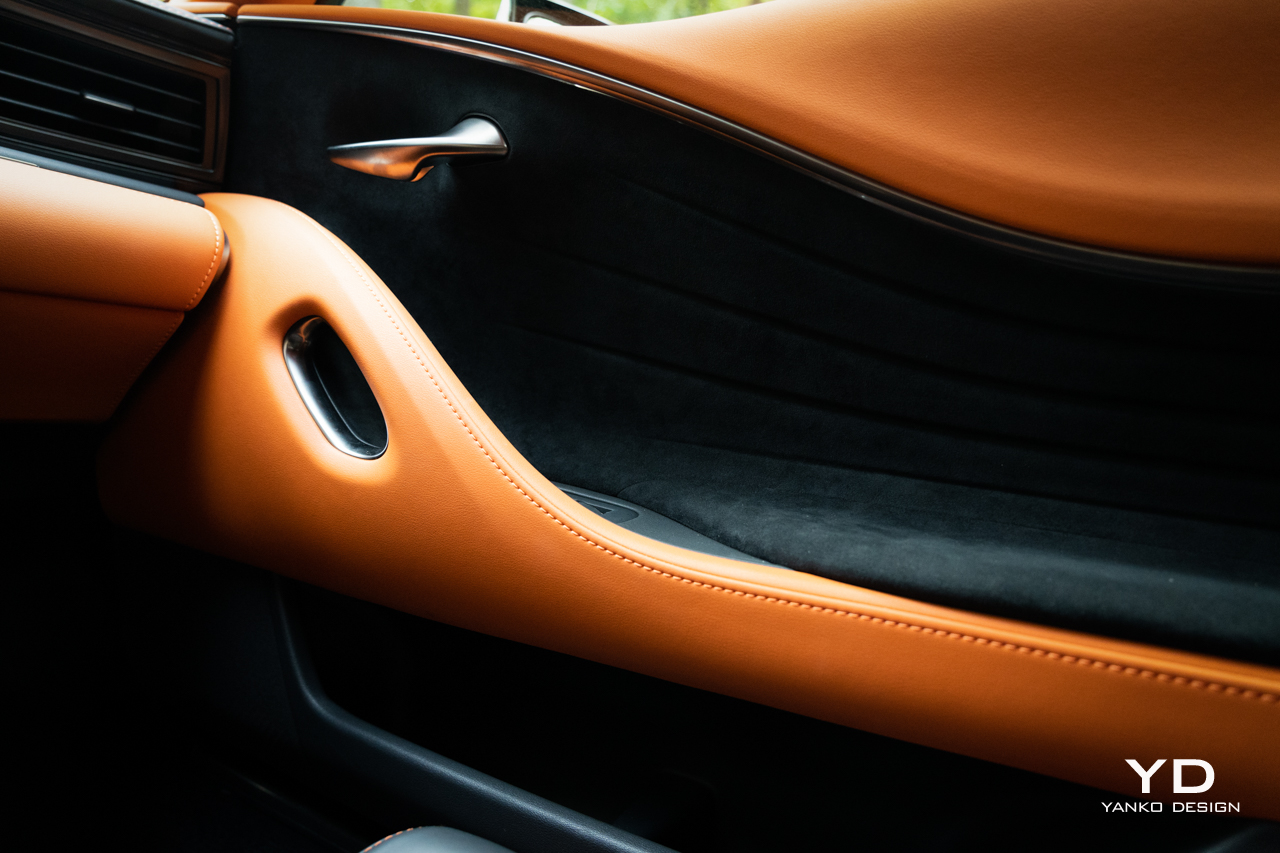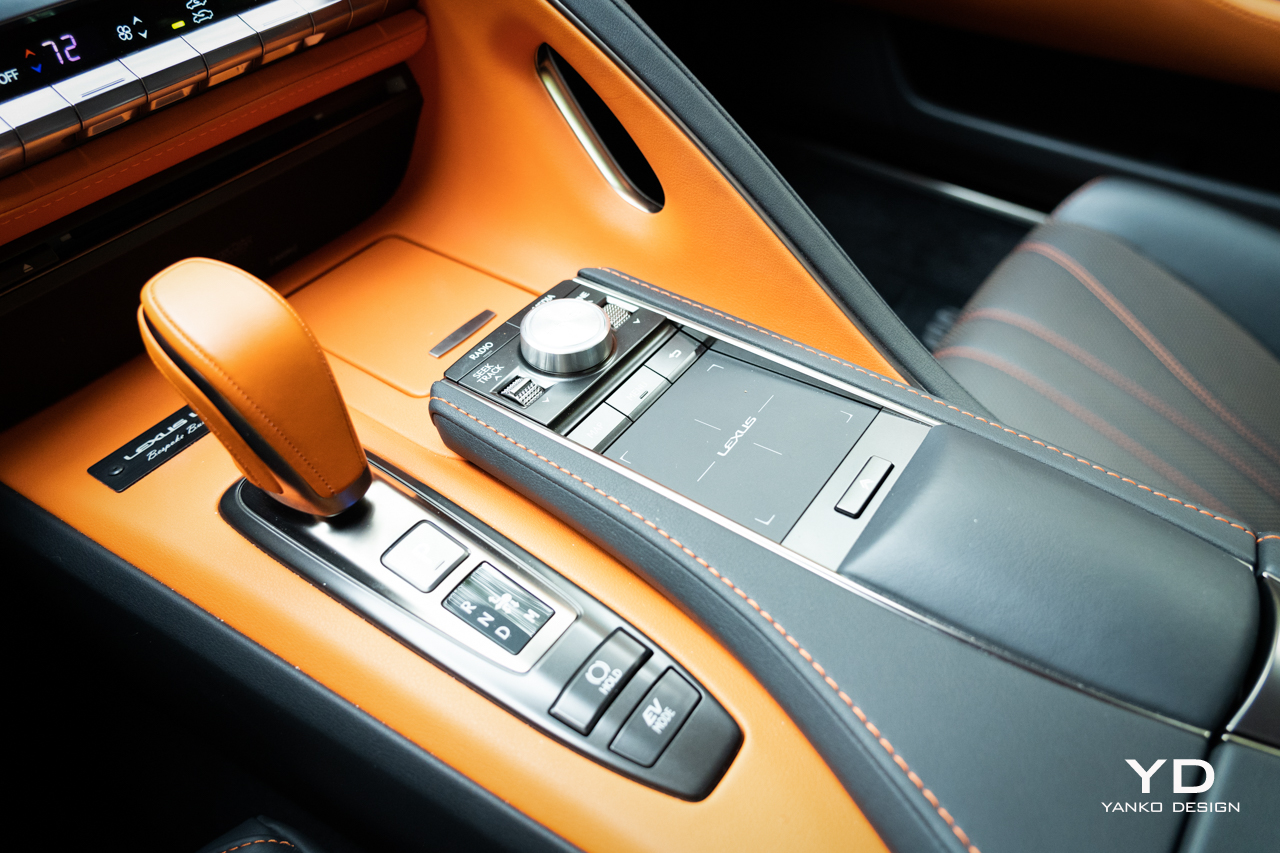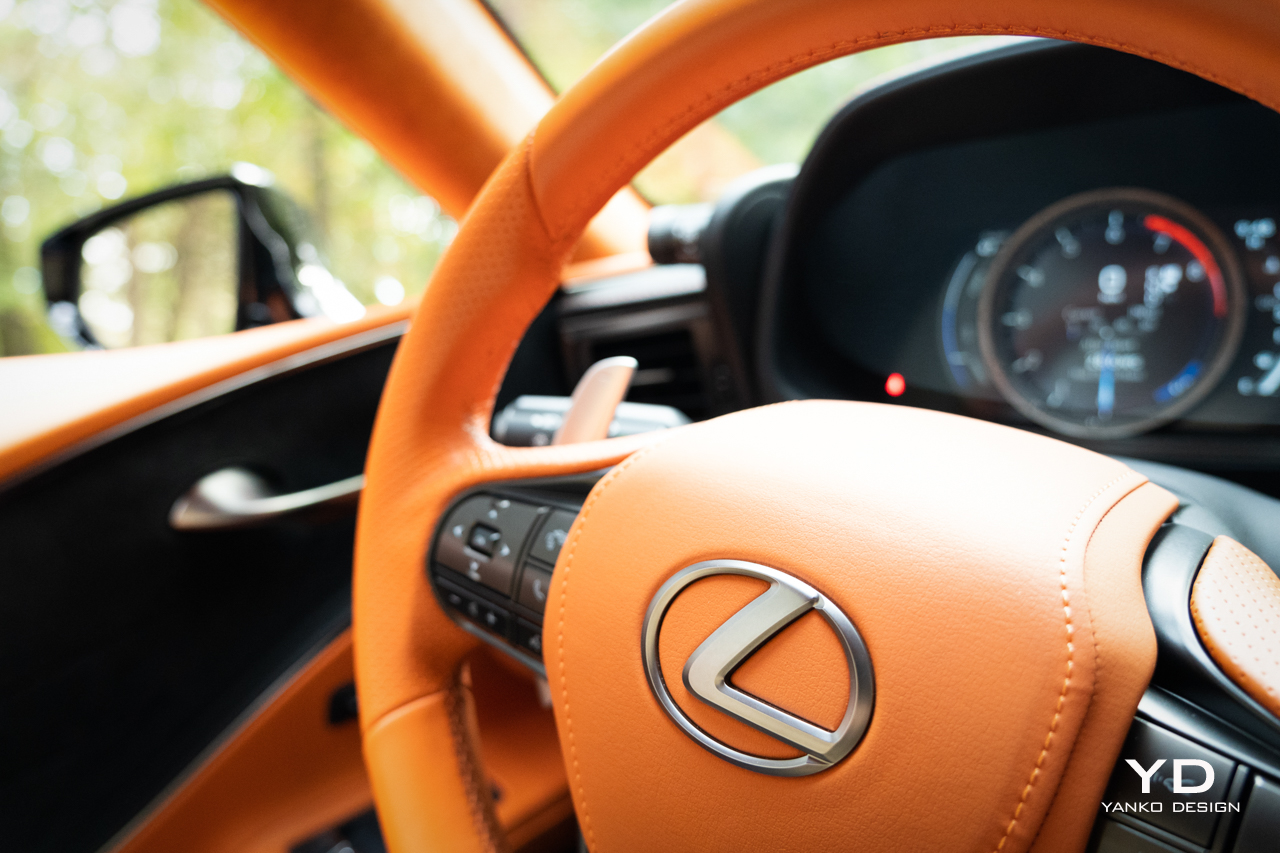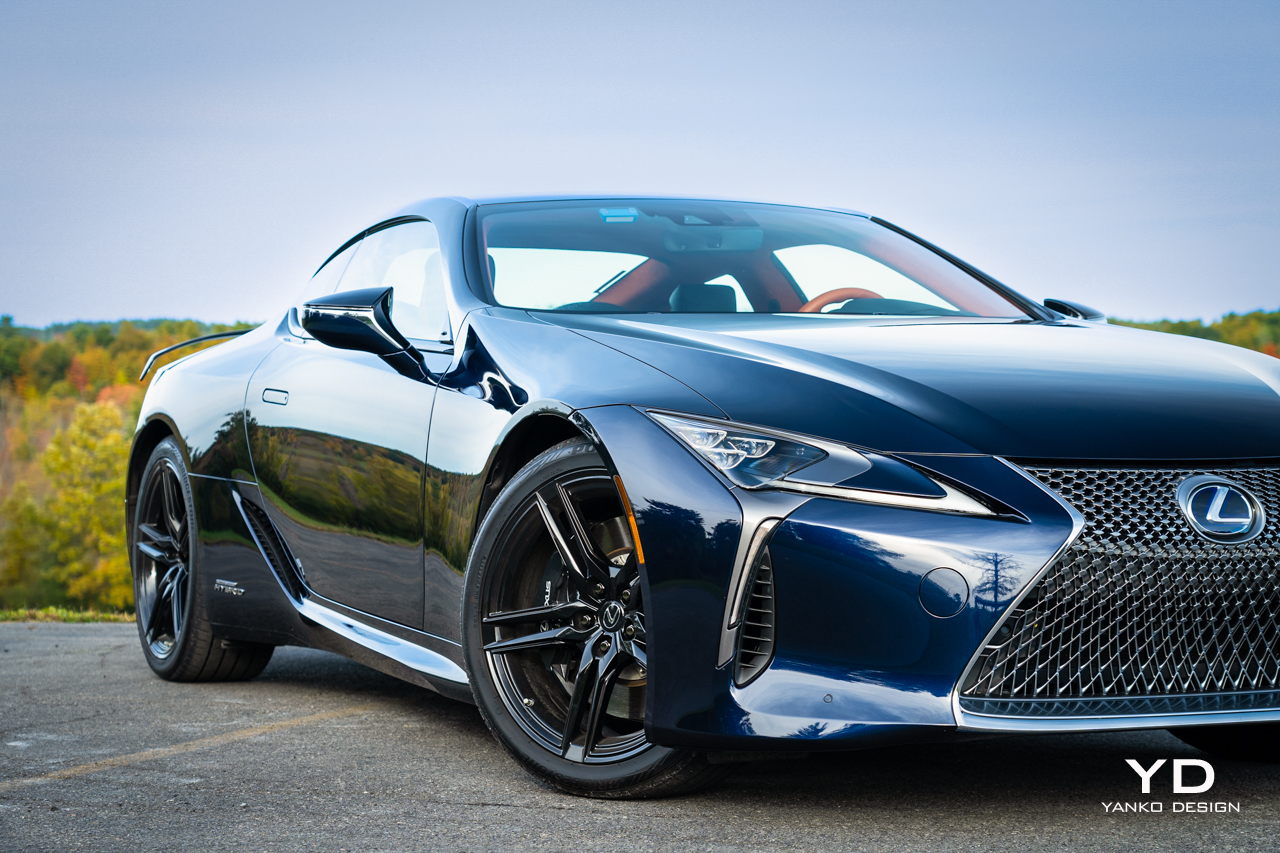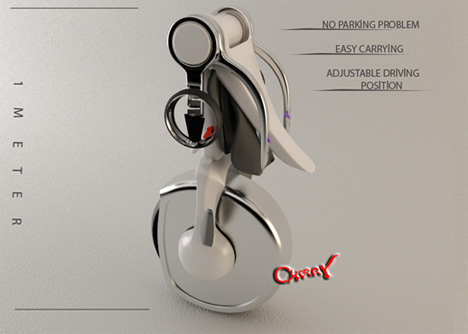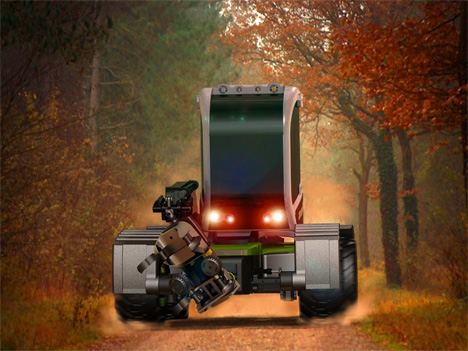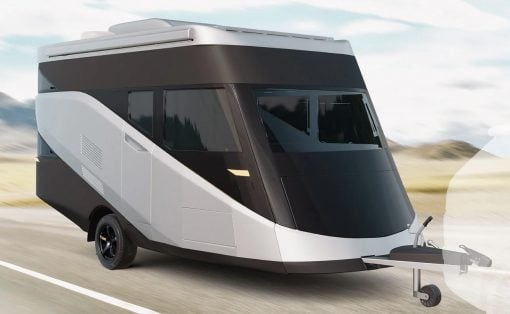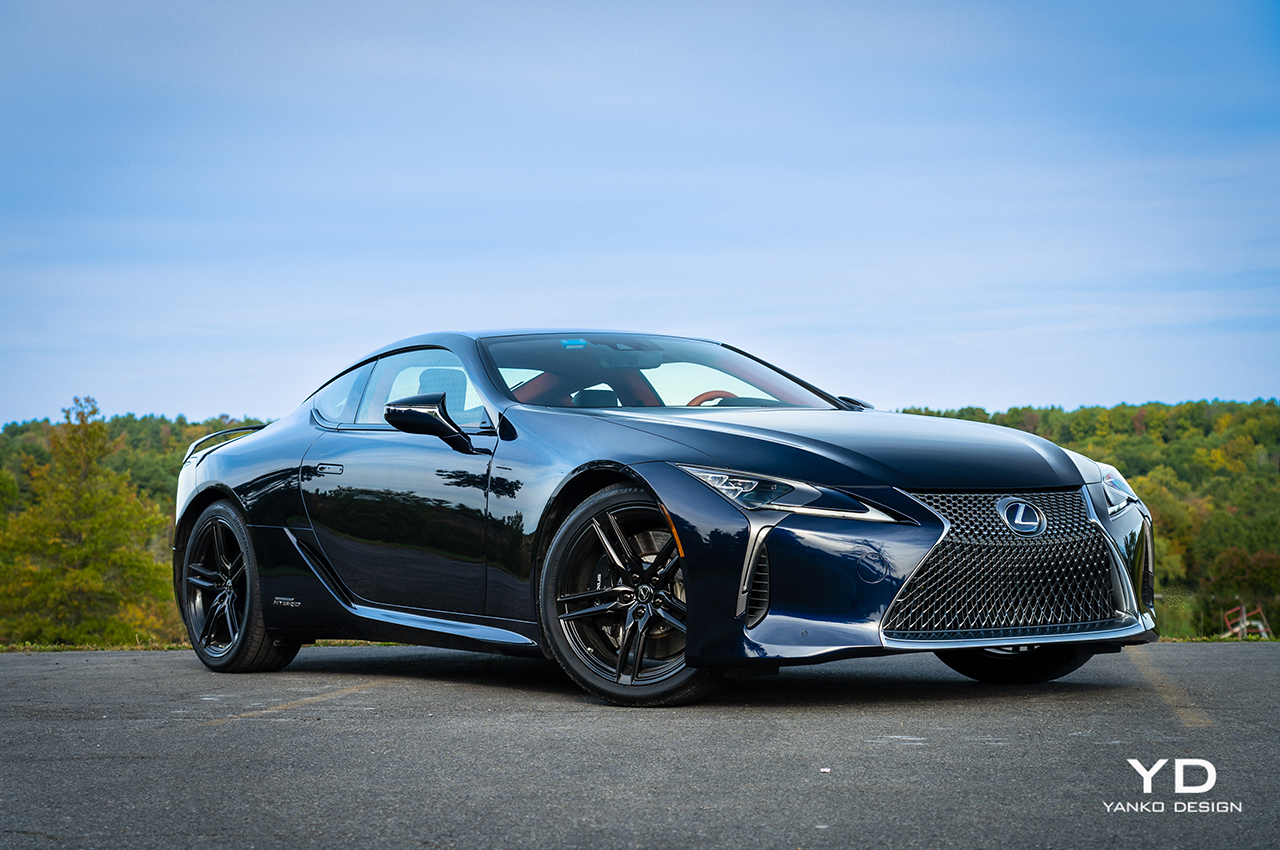
PROS:
- Incredible styling
- Remarkable interior
- Smooth, effortless performance
CONS:
- Reluctant transmission
- Scant EV-only range
- Useless rear seats
The phrase “nice Lexus” is not something you’re likely to hear from total strangers in most situations, but when you show up in one of these, you’d best be ready to explain just what kind of car this thing is and from which planet it originated. 10 years on since the car made its debut as a concept at the 2012 North American International Auto Show, the Lexus LC 500 is still among the best-looking coupes on the road.
It’s been six years since the car’s introduction as a production model and, in that time, changes have been few — why mess with perfection? Still, the LC 500 has gained some much-needed tech updates and can now be extensively configured through a program Lexus calls Bespoke Build. That seemed like a great time to sample the LC 500h flavor anew, and to experience the car’s outrageously innovative, surprisingly effective hybrid system.
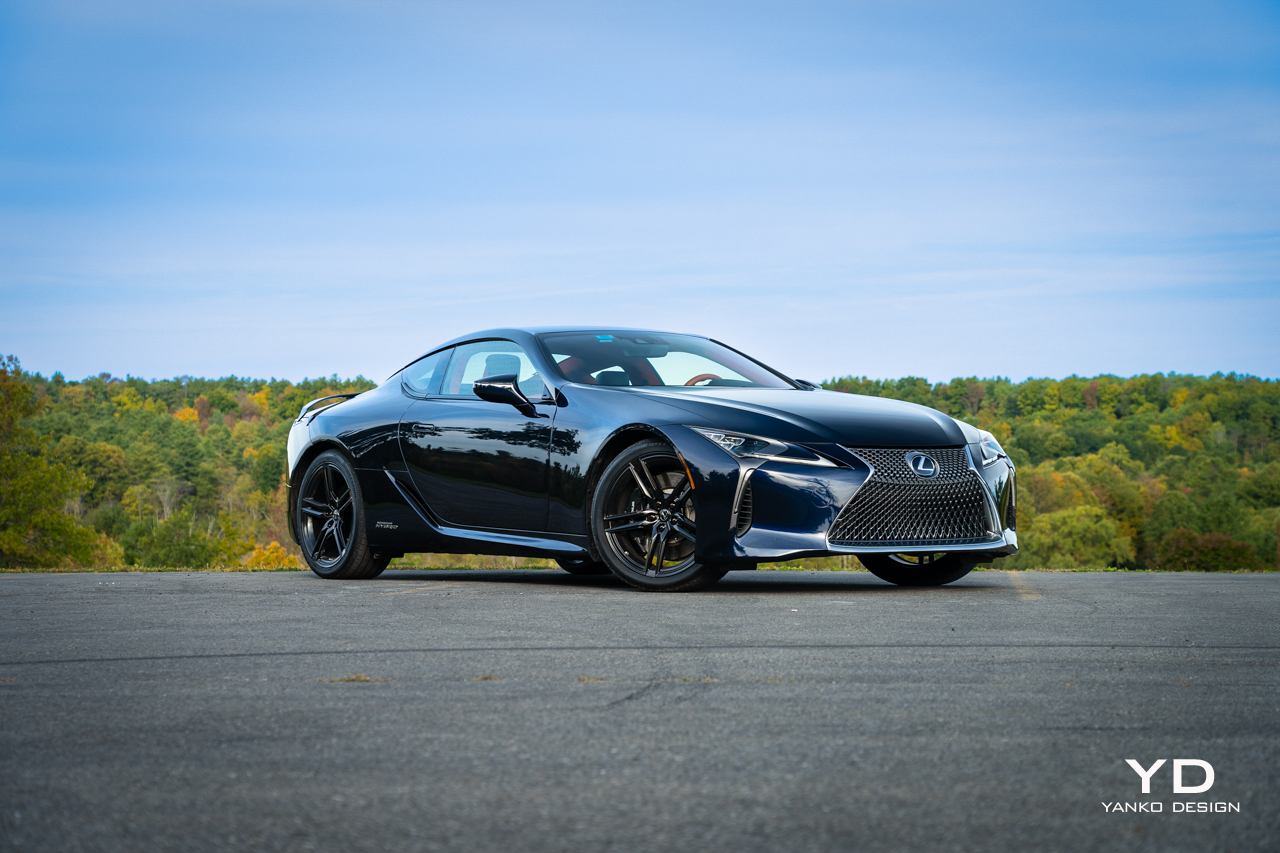
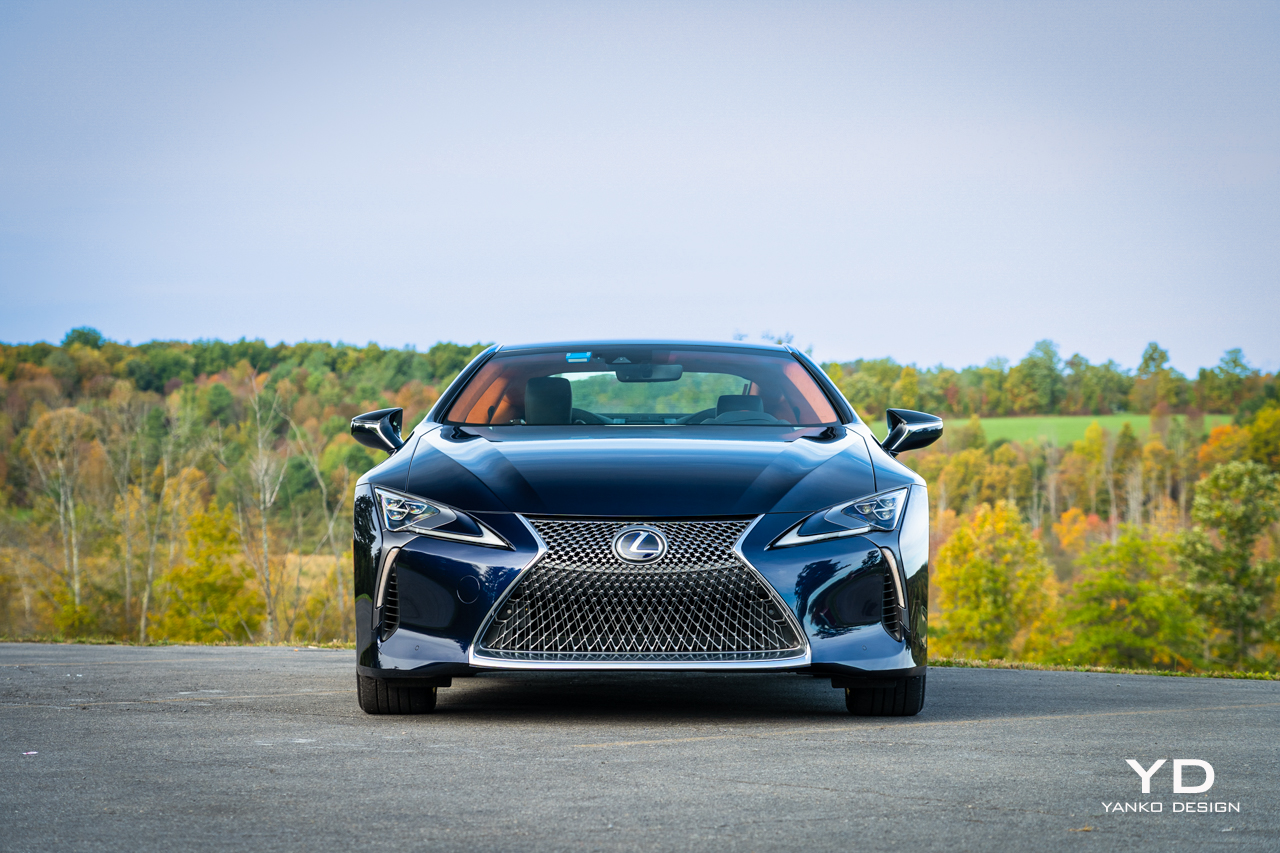
From concept to creation
The LC 500 made the difficult transition from pie-in-the-sky concept car to real-world production car better than most. Though the process took four years, other than a few subtle nips and tucks, the LF-LC concept and production LC 500 are nigh-indistinguishable.
That means this, the hybrid flavor LC 500h looks like nothing else on the road. Sure, it is full of Lexus design cues — just look no further than that massive, world-threatening grille up front — but it is undeniably its own thing, and a stellar thing at that.
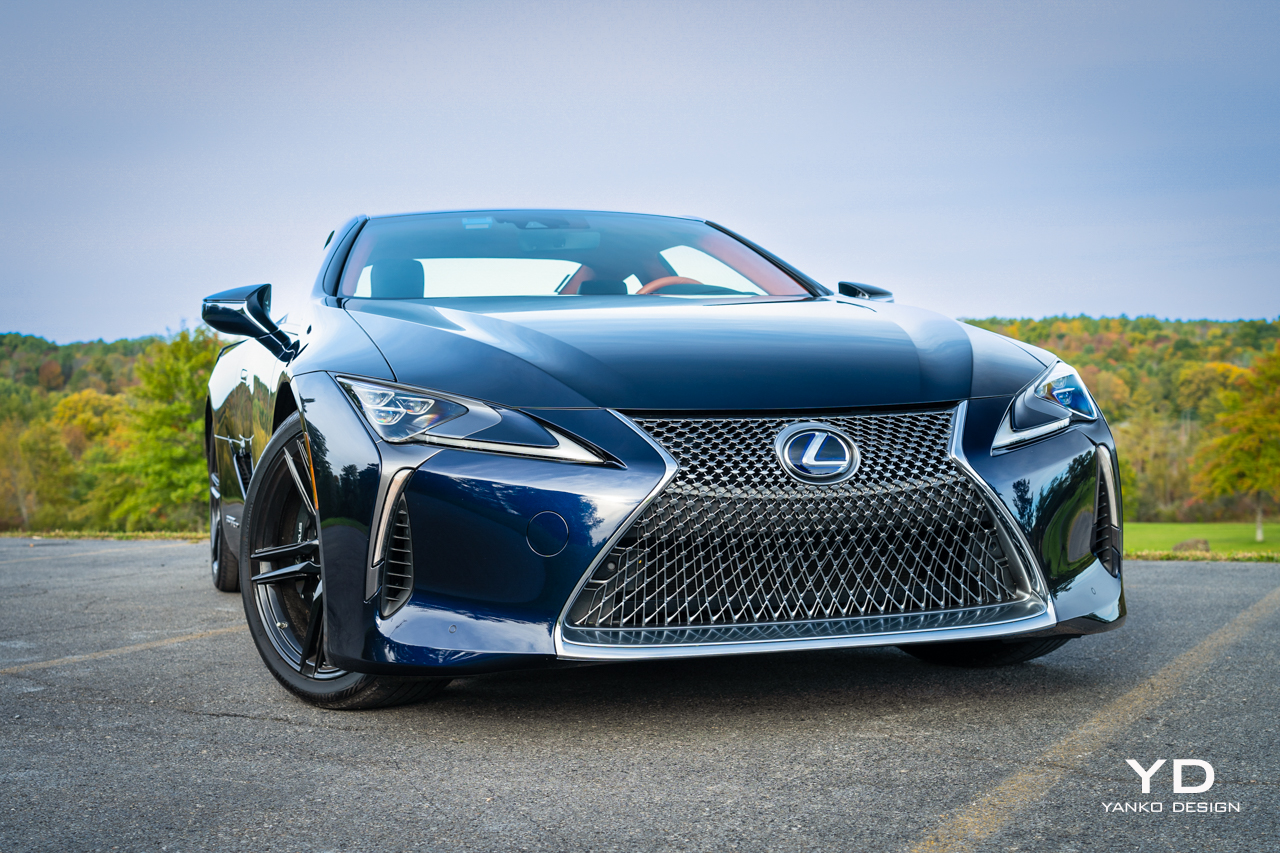
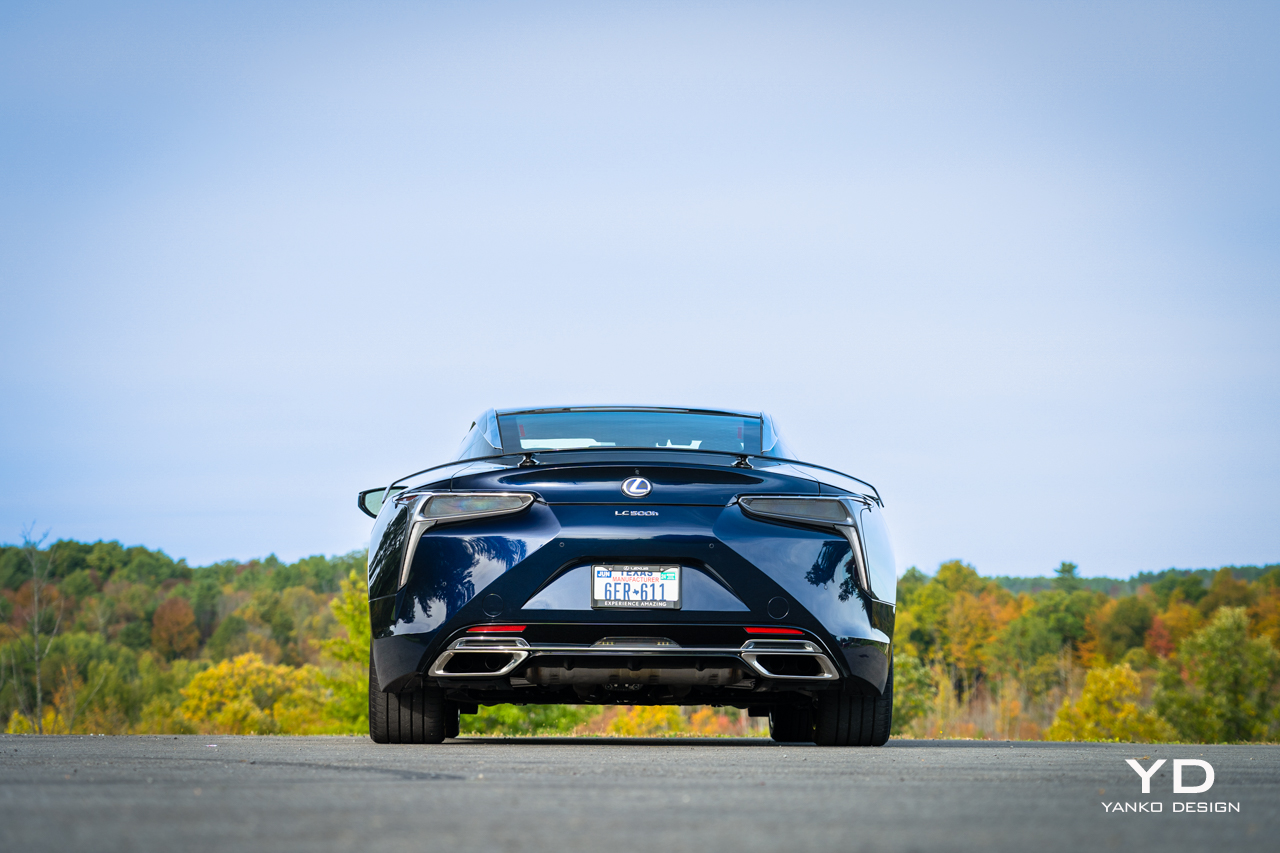
The long, low, wide nose contains a pair of svelte headlights that tuck themselves back almost into the fenders, shining out over dashes of silver, arrows all pointing forward. After you get past the nose there’s a calmness to the side of the car, only a few upward flourishes distracting the clean lines that run to the rear. At the back, four chrome tailpipe finishers poke through a little diffuser, setting up a bumper that’s dramatically creased. More silver highlights extend from the tail lights, defining the upper and rearward terminations of the rear fenders.
It’s all capped off by an outrageous, sweeping, carbon-fiber wing that curls down from the rear decklid, following the shape of the terminal end of the car. If you’re a Gundam fan, it wouldn’t look out of place perched on the nose of Syd Mead’s Turn-A Gundam. It’s all a bit too much yet it all works so well.
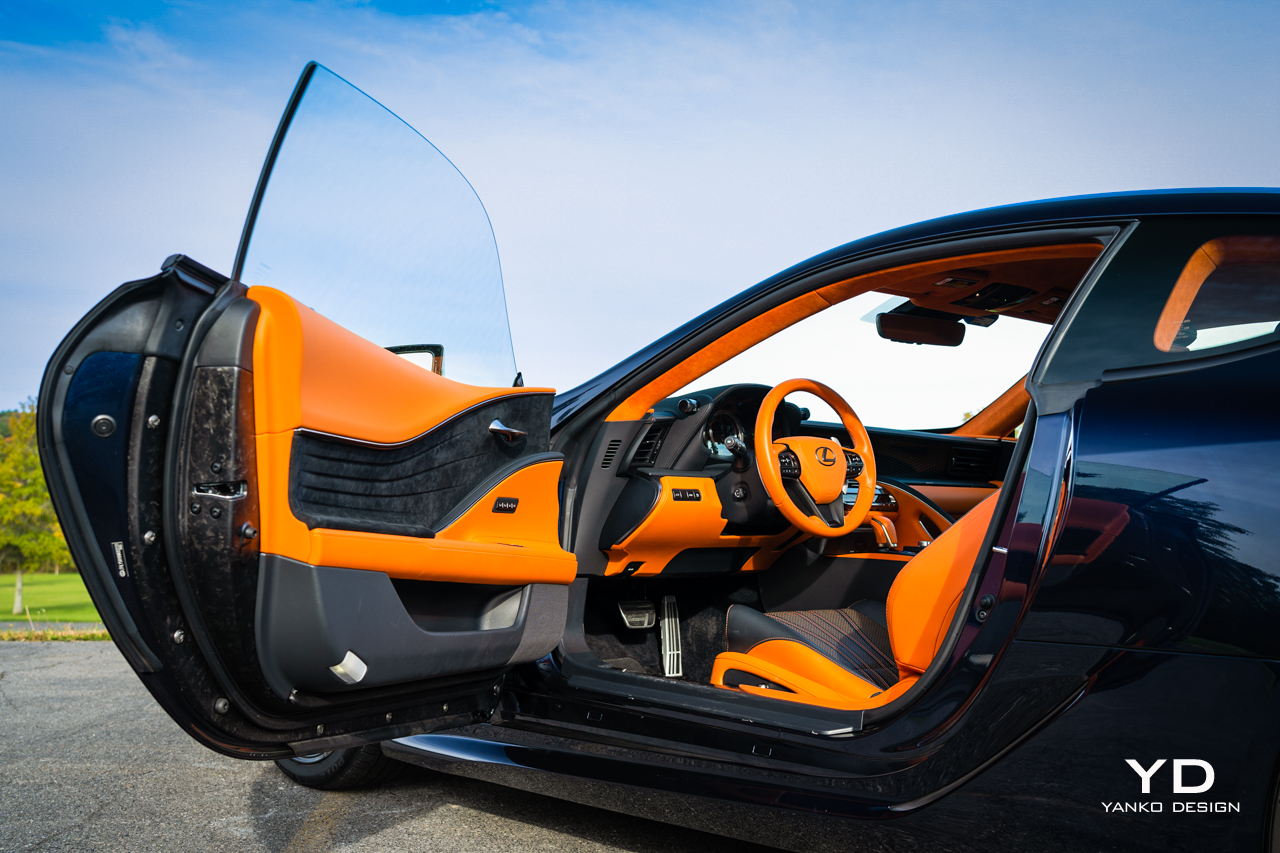
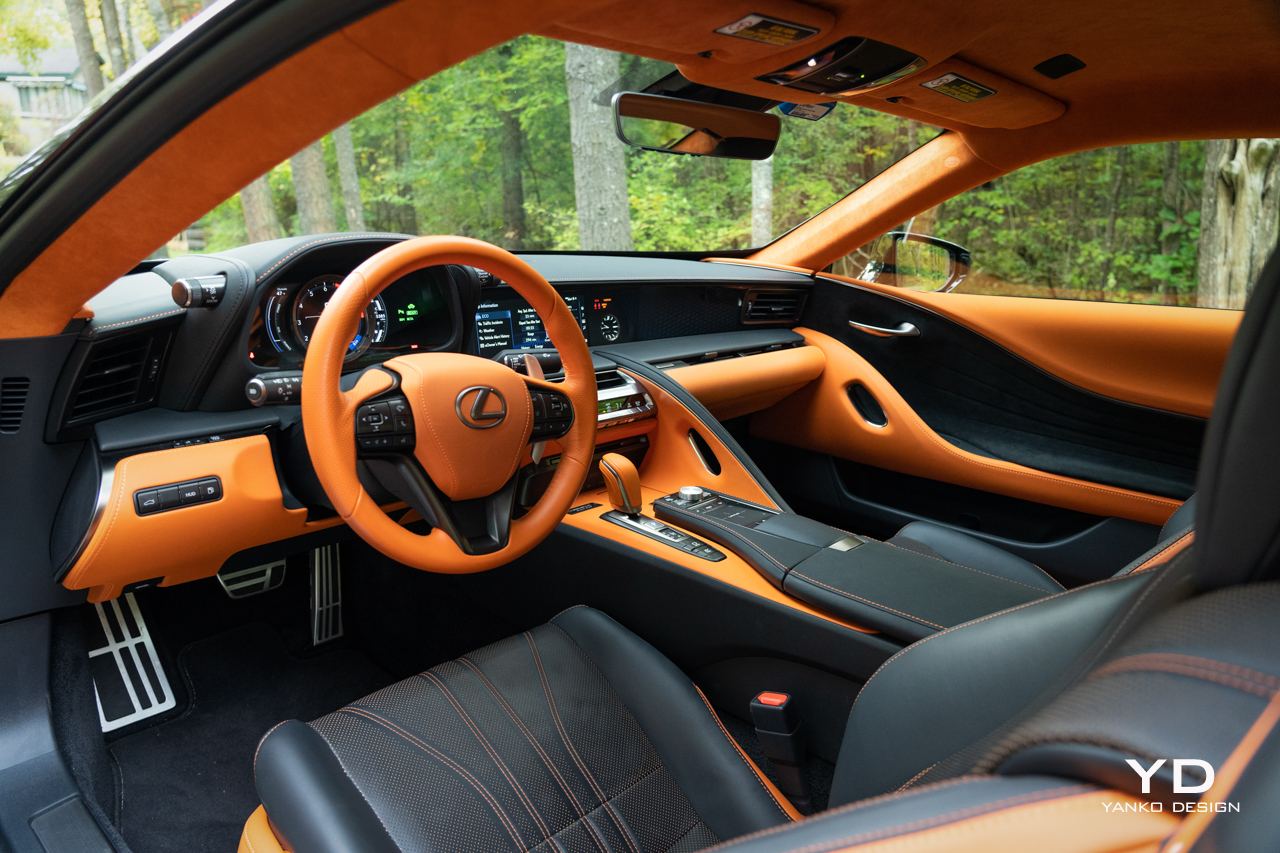
Crazy as the outside is, though, the interior is even more remarkable. The door cards seem to crash up like waves from either side, threatening to sweep over the wide dashboard that might as well be in another county it’s so far away from the driver’s seat. That is, perhaps, to discourage you from trying to reach up and stab at that 10.3-inch screen, which is not only non-touch, it’s recessed behind a transparent, plastic barrier.
The infotainment system is exclusively controlled via a small touchpad that sits just aft of the shifter. It’s haptic-enabled, buzzing as you drag your finger across to make it easy to tell when you’re hovering over the virtual button or control that you want. A few actual, physical buttons sit above it, controls to bring up the map, radio tuner, or to return home. There’s a generous volume knob, too.
These few tokens to tactility, along with physical buttons and rockers for HVAC controls, are enough for me. I’ll be honest, I don’t hate this system as much as I know many of my esteemed colleagues at other publications do. Lexus has updated the interface over the years and it’s not bad to use. It even has wired Android Auto and Apple CarPlay, something sadly lacking in earlier versions of the LC 500. It’s here now, and it’s great, but that is one places where this touchpad is simply unsatisfying to use. When you’re projecting from your phone, that touchpad acts like a four-way controller, requiring that you swipe up, down, left, or right to scan between every on-screen control. It’s slow and clumsy, but definitely not Lexus’ fault.
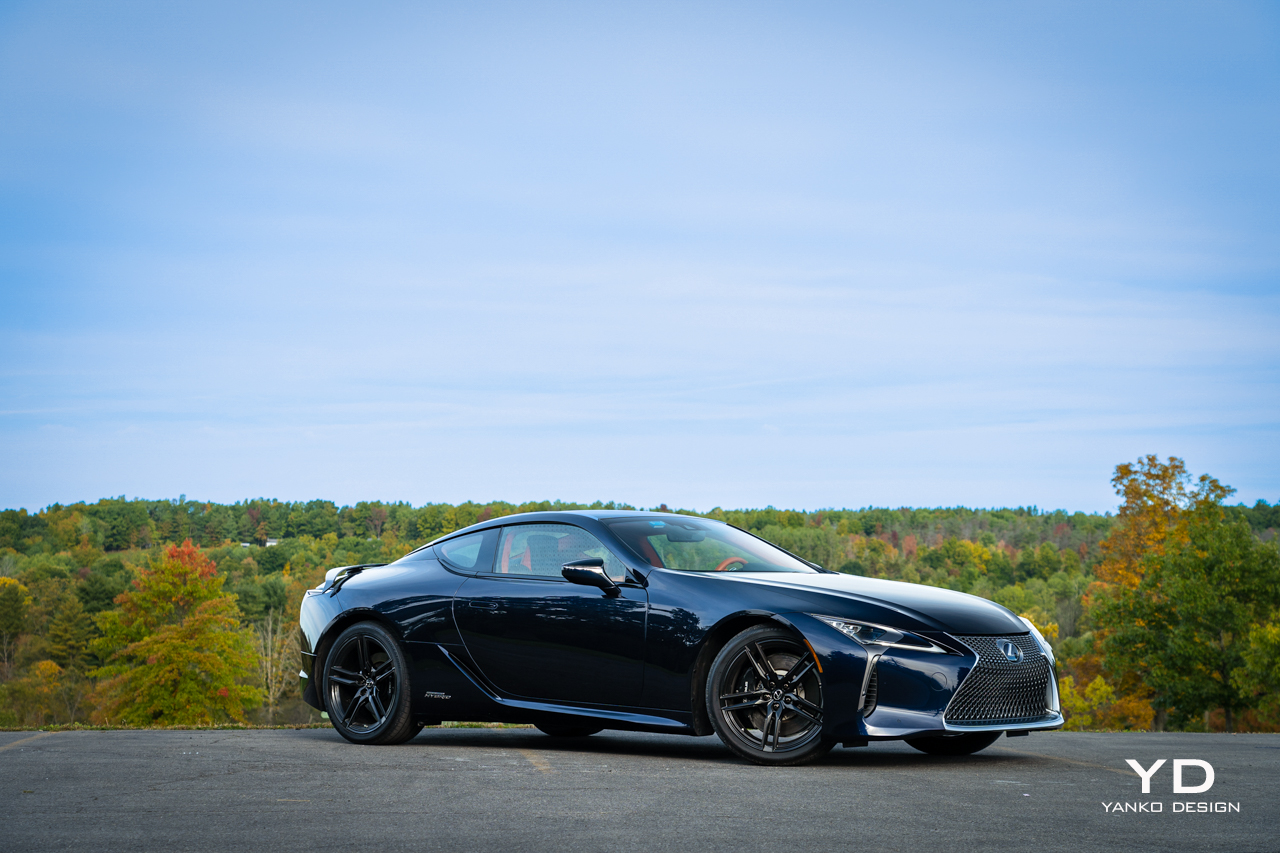
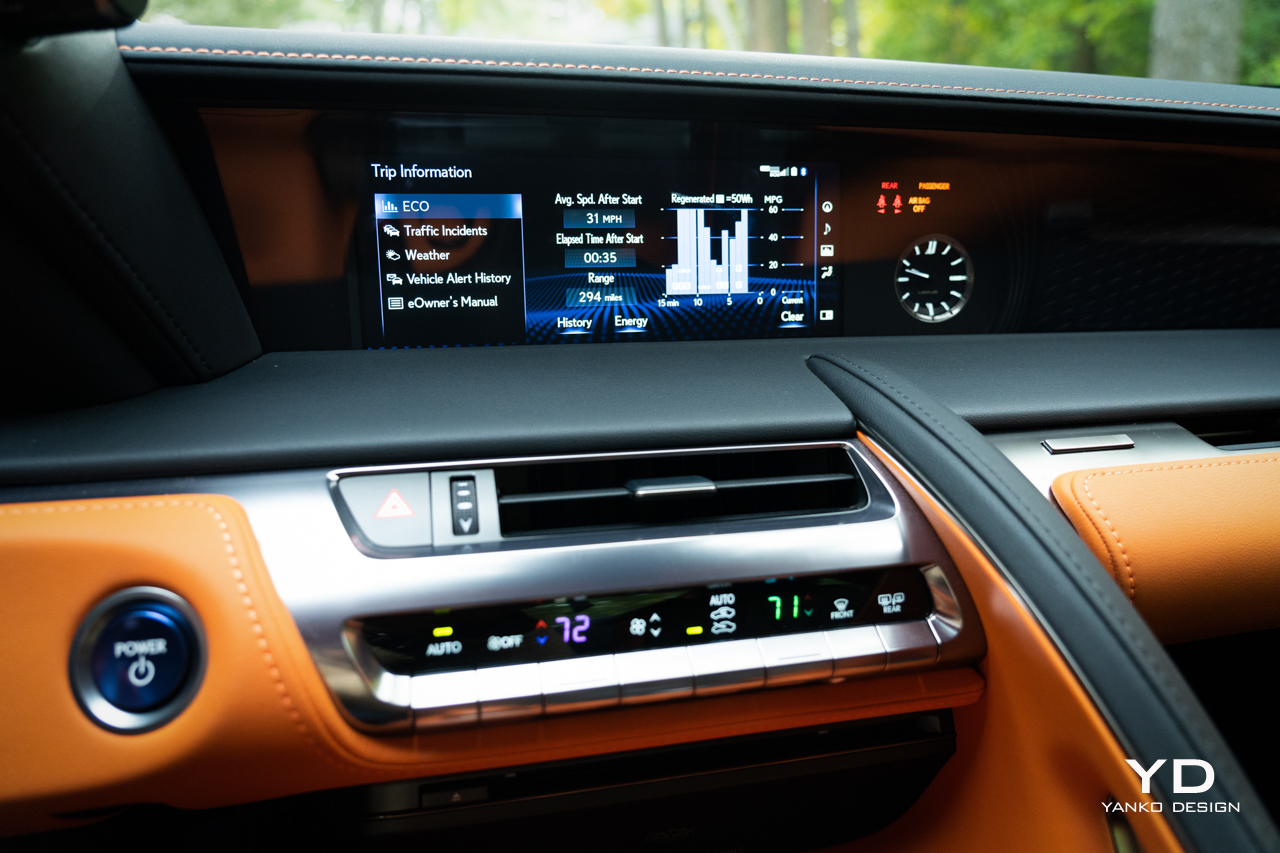
The drive
The more important controls are the ones that fall to hands and feet after you slot into the sweeping driver’s seat, which has a relatively simple design featuring something like a padded shawl over its shoulders. These are the Comfort seats and, despite extremely limited configurability (just the usual positioning plus an adjustable lumbar), they live up to their name, encouraging a laid-back posture to match the LC’s swept-back attitude.
Instead of an Engine Start button there’s a cheeky blue Power button and, once you hit that, chances are nothing will happen. Being a hybrid, the LC 500h only kicks on the engine when it needs it and, if you hit the dedicated button labeled “EV MODE” it’ll delay that as long as possible. But, this is no plug-in. With a mere 1.1 kilowatt-hours of battery, EV-only range is realistically measured in meters. The LC 500h can only crawl around the parking lot without firing up the 3.5-liter V6. This mode, then, is for stealthy escapes from your country estate — assuming your driveway is neither long nor uphill.
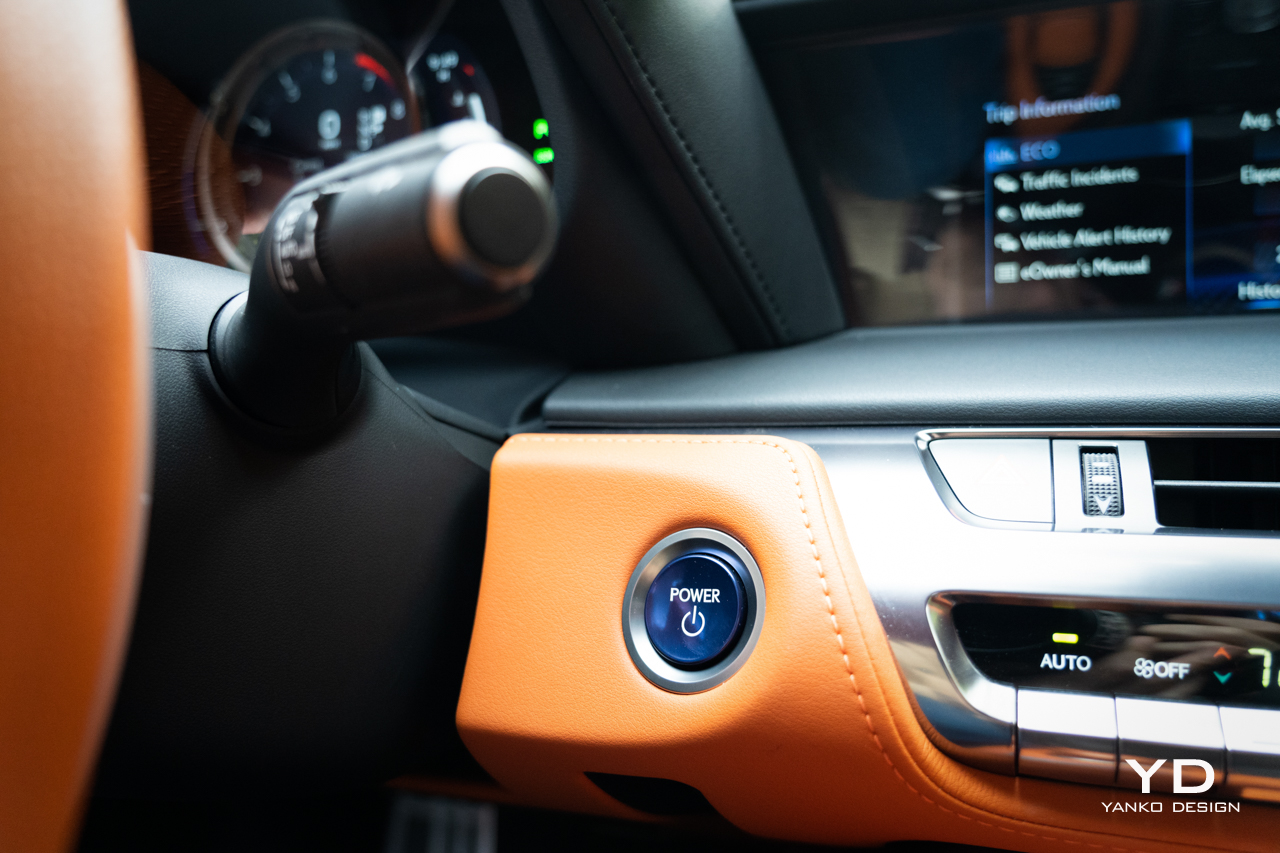
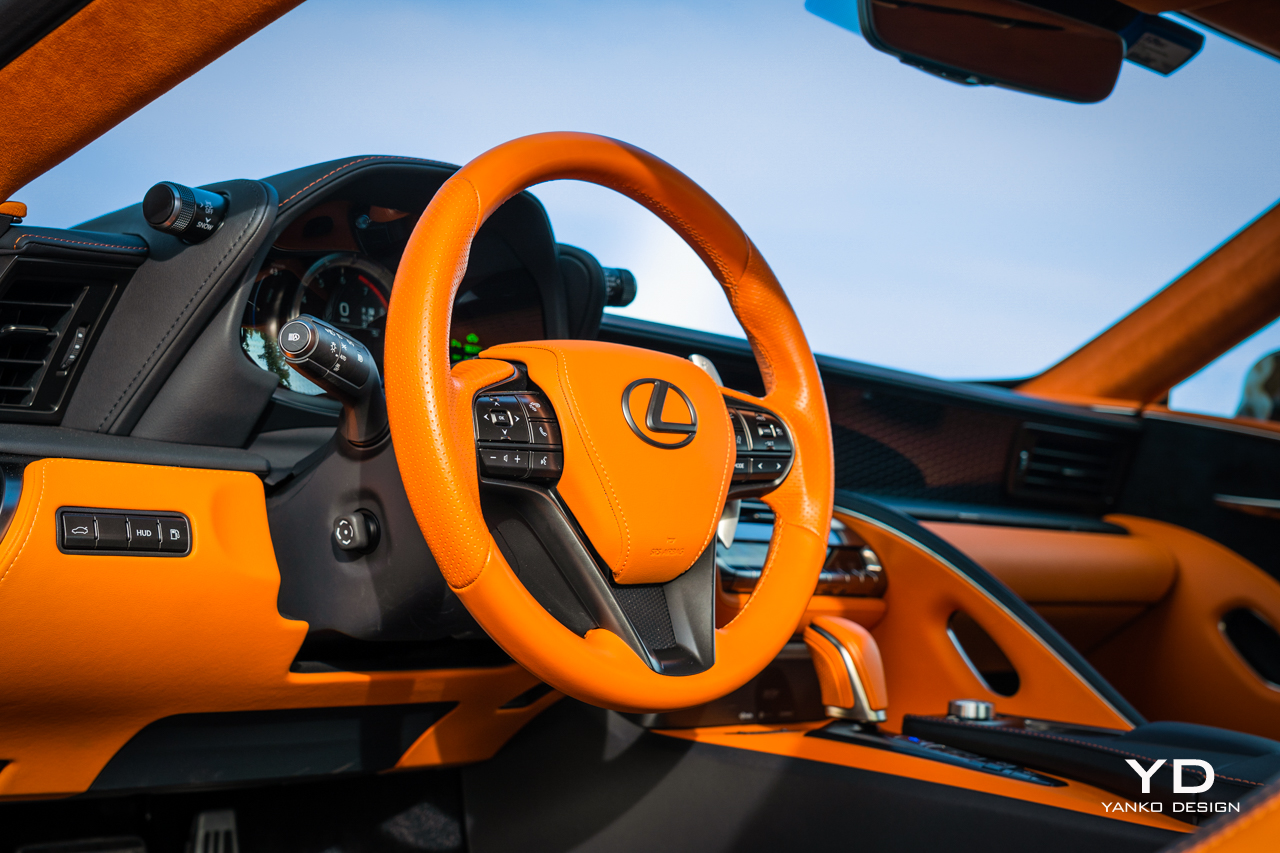
The steering wheel has a perfect look and feel. It almost feels a bit small for a car of this size, but the thick, deep rim pulls your hands into position and the quick steering ratio ensures they stay there.
The little shifter moves to the side and back to engage D and you’re away, the car’s combination CVT and four-speed transmissions (more on that in a moment) slipping and sliding through the 10 effective gears to ensure you barely feel any change in cog. In either Normal or Comfort, the LC 500h is remarkably smooth, doing everything in its power to keep the engine revs below 2,000, stopping and restarting the engine with every crest of every hill. When you’re driving smoothly, you can barely feel the transition.
It’s when you get on things a little bit harder that the limitations of that drivetrain start to become apparent. To shift driving modes you reach up to a rotary dial mounted to the side of the gauge cluster. Tilt it forward to get more sporty, rearward to get more economical. Two twists forward enables Sport Plus mode, digital gauge cluster reconfiguring to look like an LFA and the car momentarily dropping a few gears to bring the engine closer to its powerband.
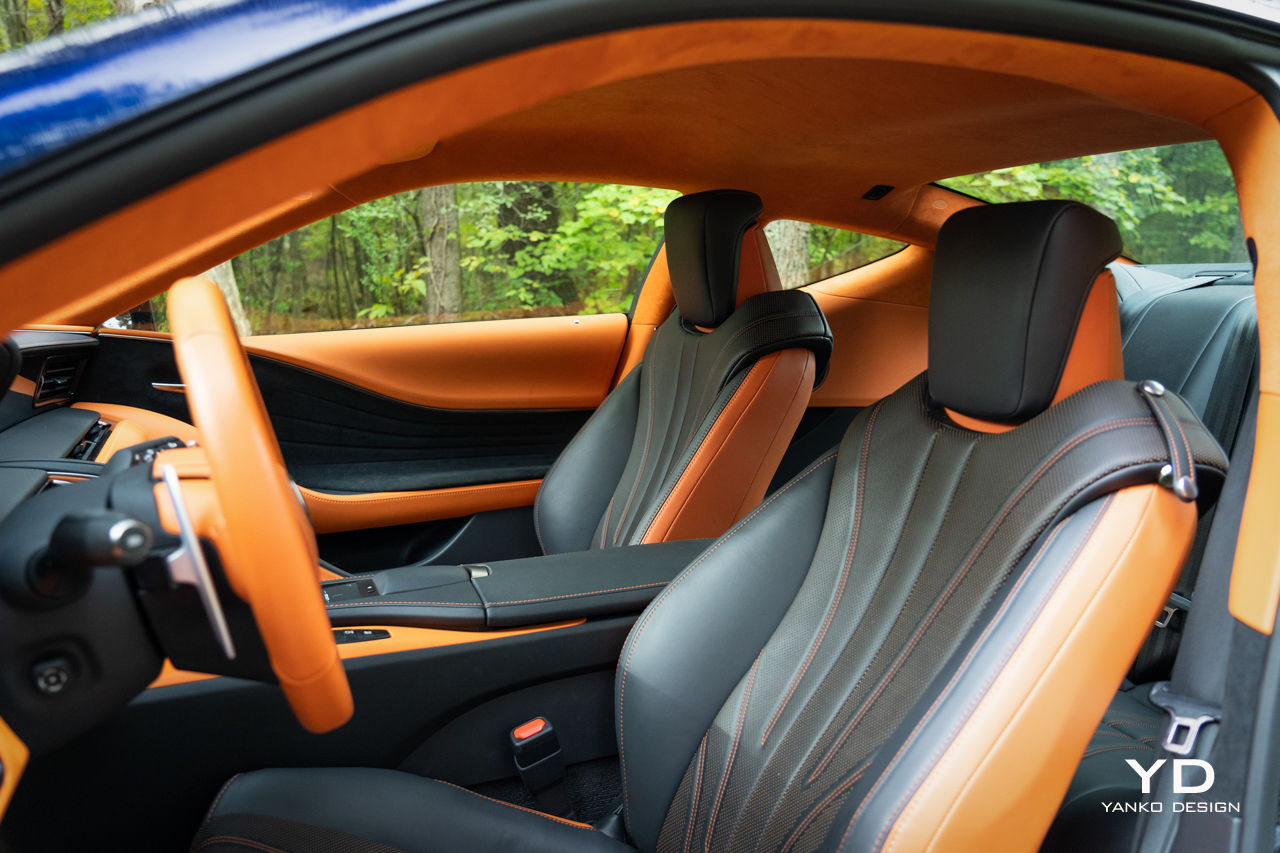
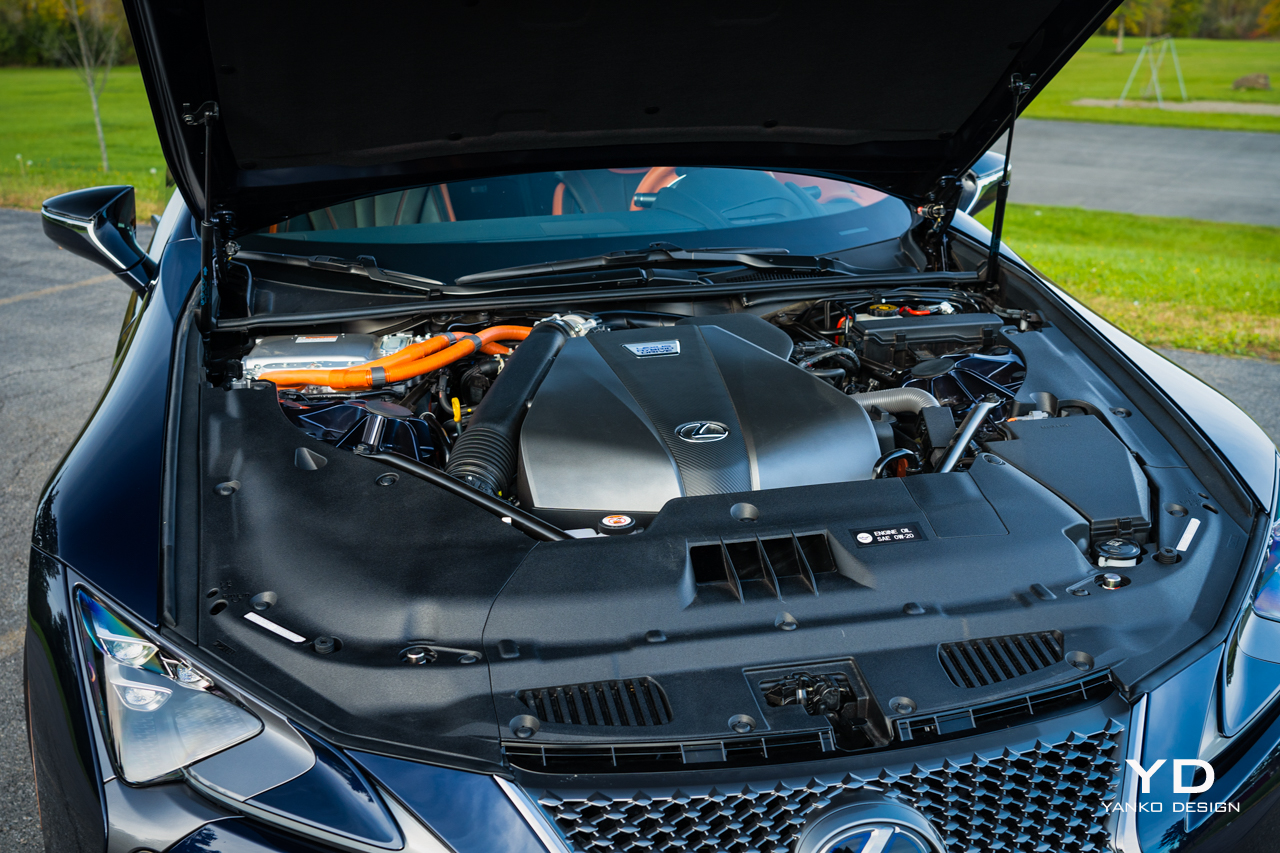
But, give it a moment and the car will quickly upshift again, idling along at 2,000 RPM until you dip into the throttle, resulting in a four or five gear downshift to deliver any torque. Even in this mode, the engine is still frequently disabled to save fuel, often inducing an annoying lag when you get back on the throttle. That transmission also auto-upshifts should you get anywhere near the redline.
That’s all a bit of a shame and it makes the car less than satisfying to drive when the road turns back on itself sharply, calling for lots of hard acceleration and braking. Doubly a shame because the brake feel is so good and, once the car gets the right gear, the total 354 horsepower and 370 pound-feet of torque is strong.
The LC 500h, then, is a car better suited for big, sweeping roads with high enough speeds to capitalize on all that grip and the sheer dimensions of the machine.
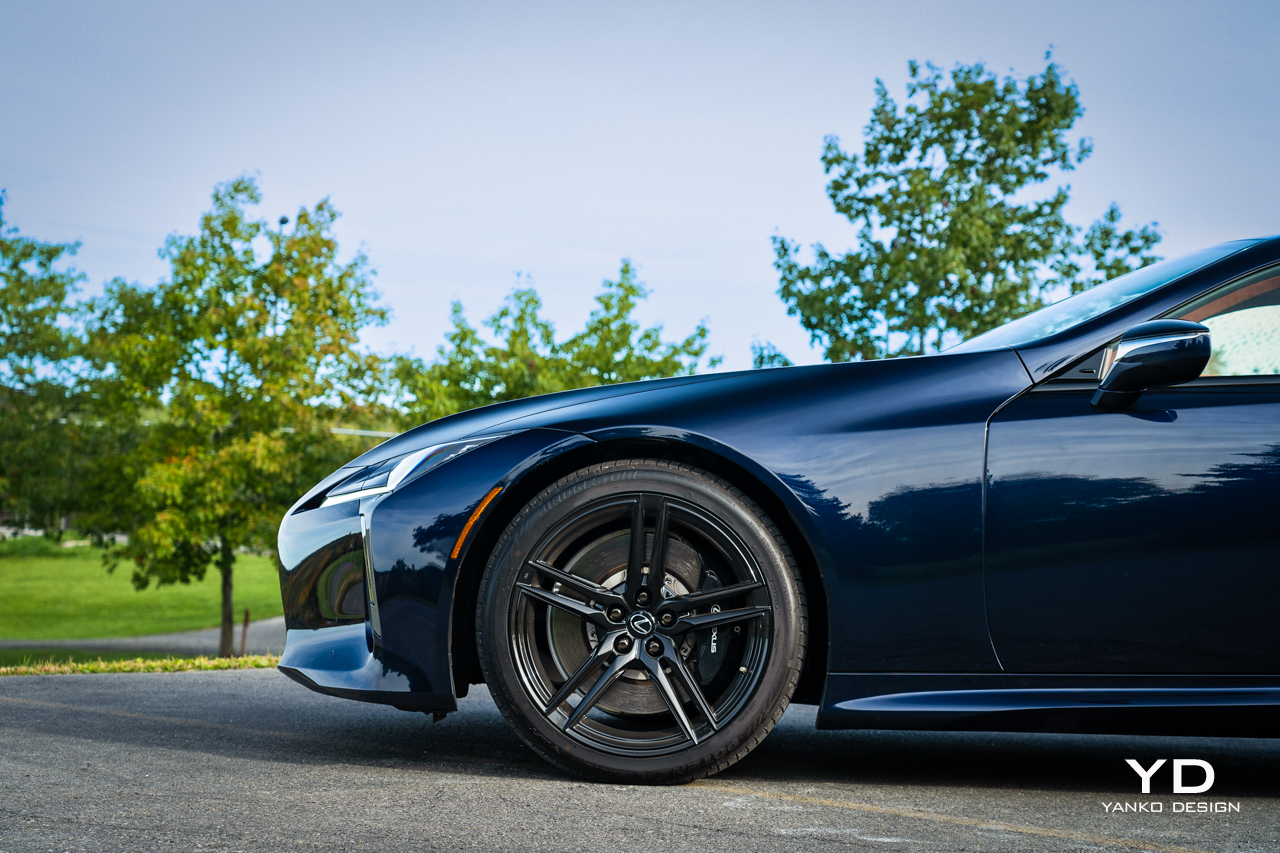
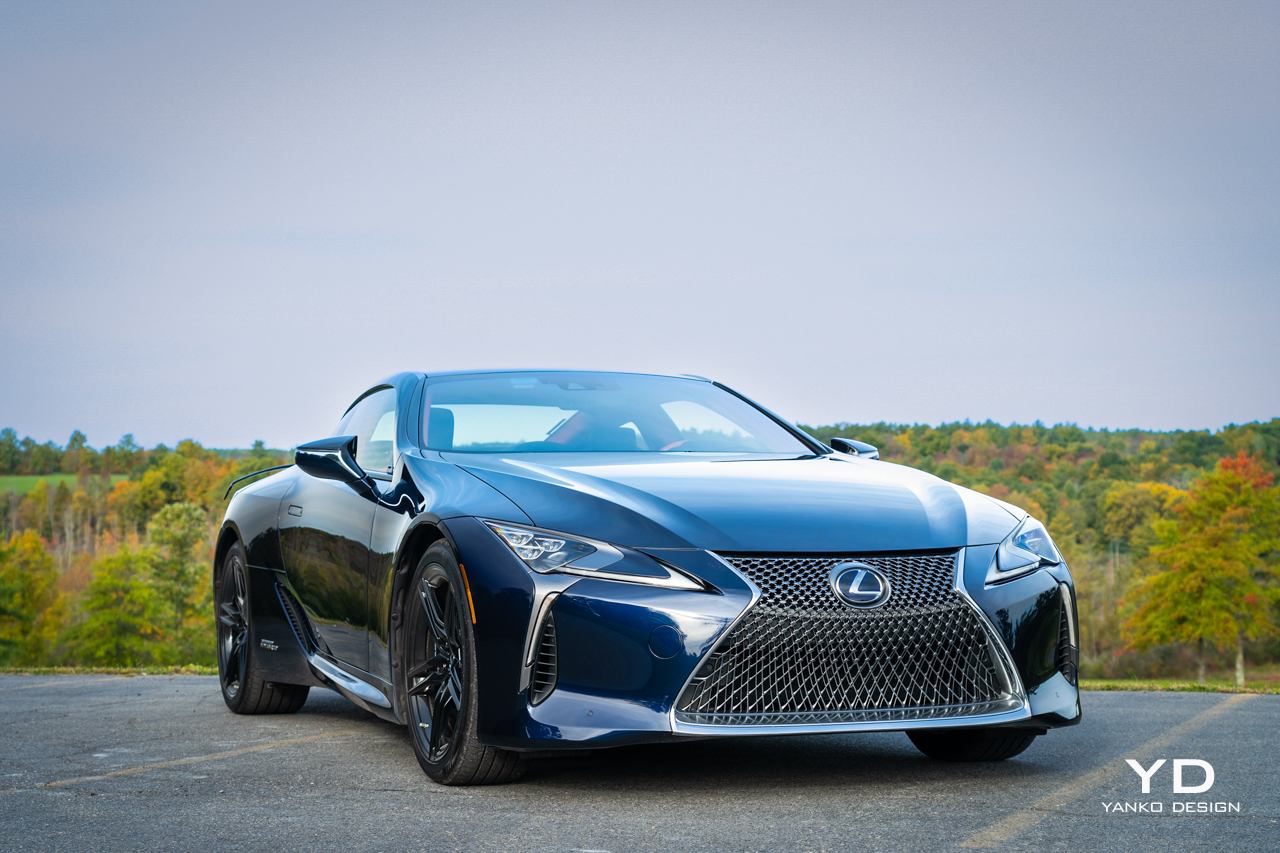
That hybrid system
As I mentioned, this is a remarkably complicated system that sits under the hood of the LC500h, all tucked in so neatly that it’s almost entirely situated behind the front axle. The bulk of the power comes from a 3.5-liter V6, which runs in the Atkinson cycle, a combustion technique focused on maximum efficiency and often used on hybrids.
That’s paired with two electric motors, and the output of all that is run through not one but two transmissions. There’s a continuously variable transmission that’s programmed to cycle through three ratios, plus a four-speed automatic. Lexus says this creates an effective 10-speed transmission and that’s how the car acts, and while this isn’t the most responsive, sporting gearbox on the planet, it is buttery smooth. Crucially, it never leaves the engine hanging, droning at a single speed like most CVTs.
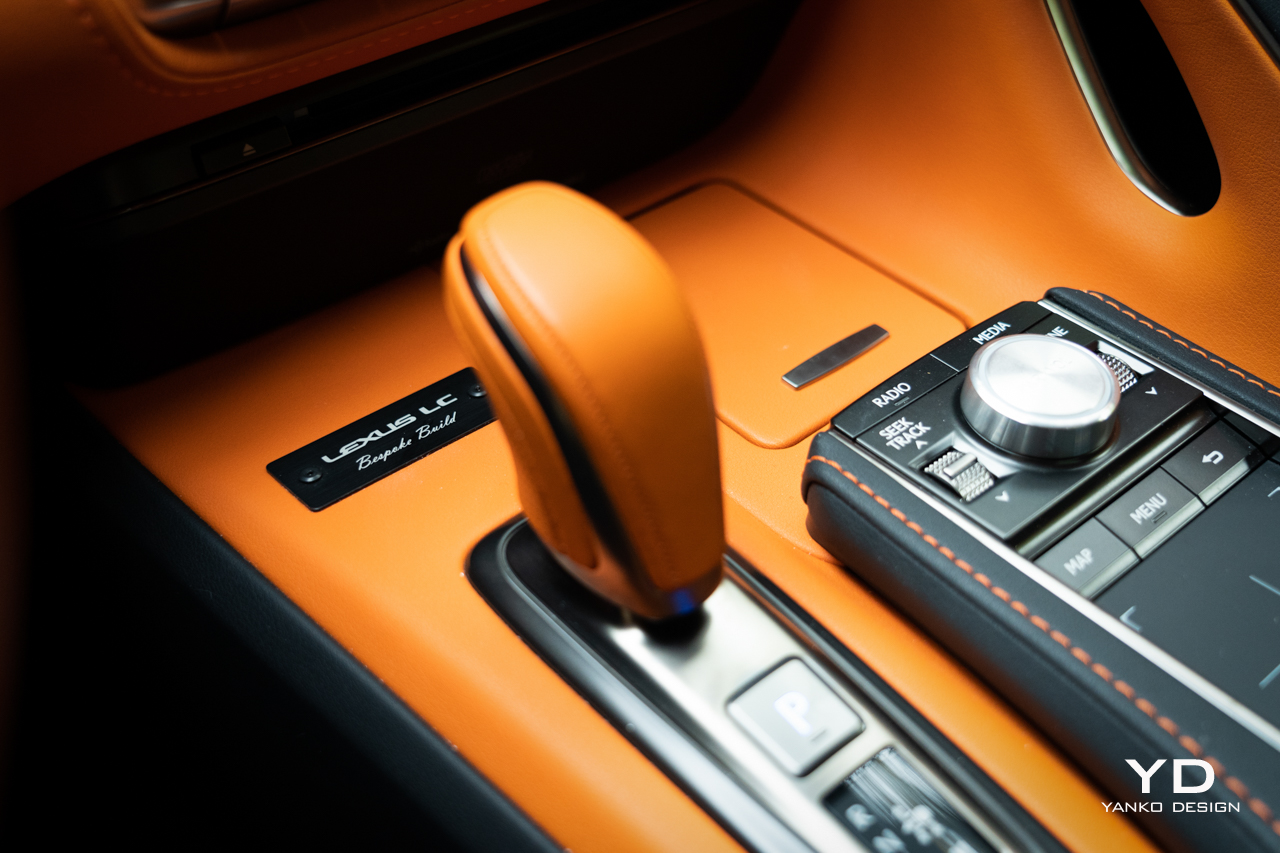
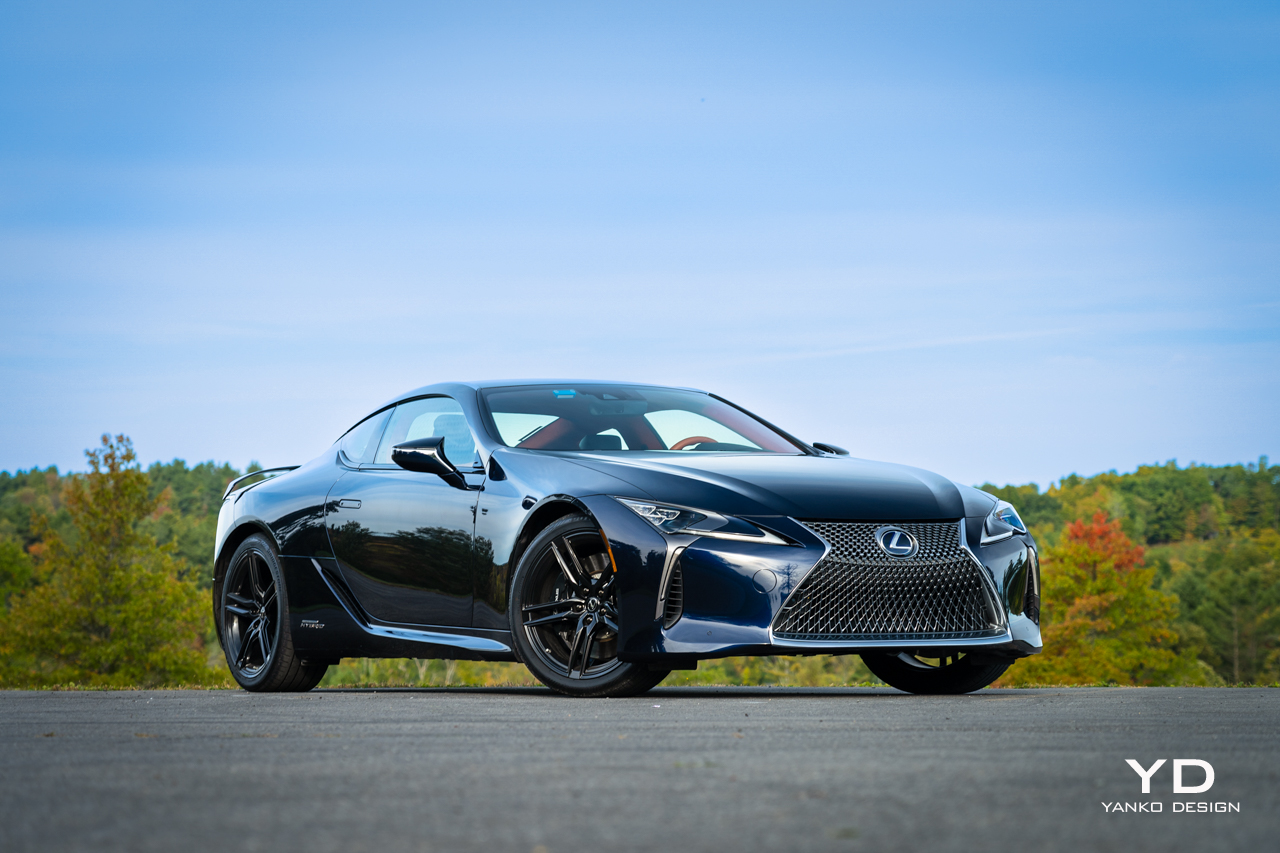
The goal of all this is power and efficiency, and while 354 hp isn’t exactly world-conquering, it’s enough to get this 4,400-pound coupe up and running with aplomb. And as far as efficiency goes, the 500h is EPA-rated for 34 mpg on the highway, 26 city and 29 combined. In my mixed testing I just about hit that mark, coming in at 28.3 mpg. That’s pretty good for a big, leggy coupe like this, and 10 mpg (50%!) better than the base LC 500.
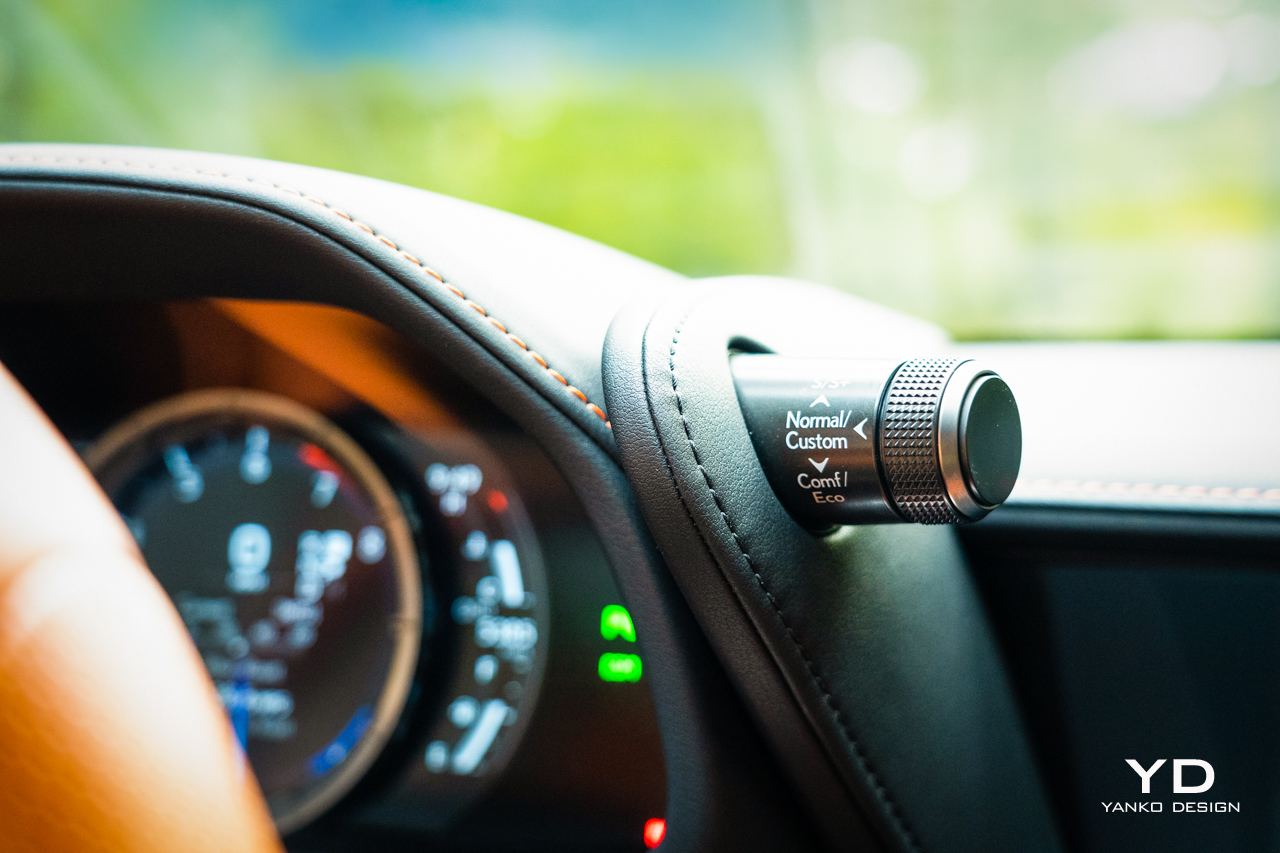
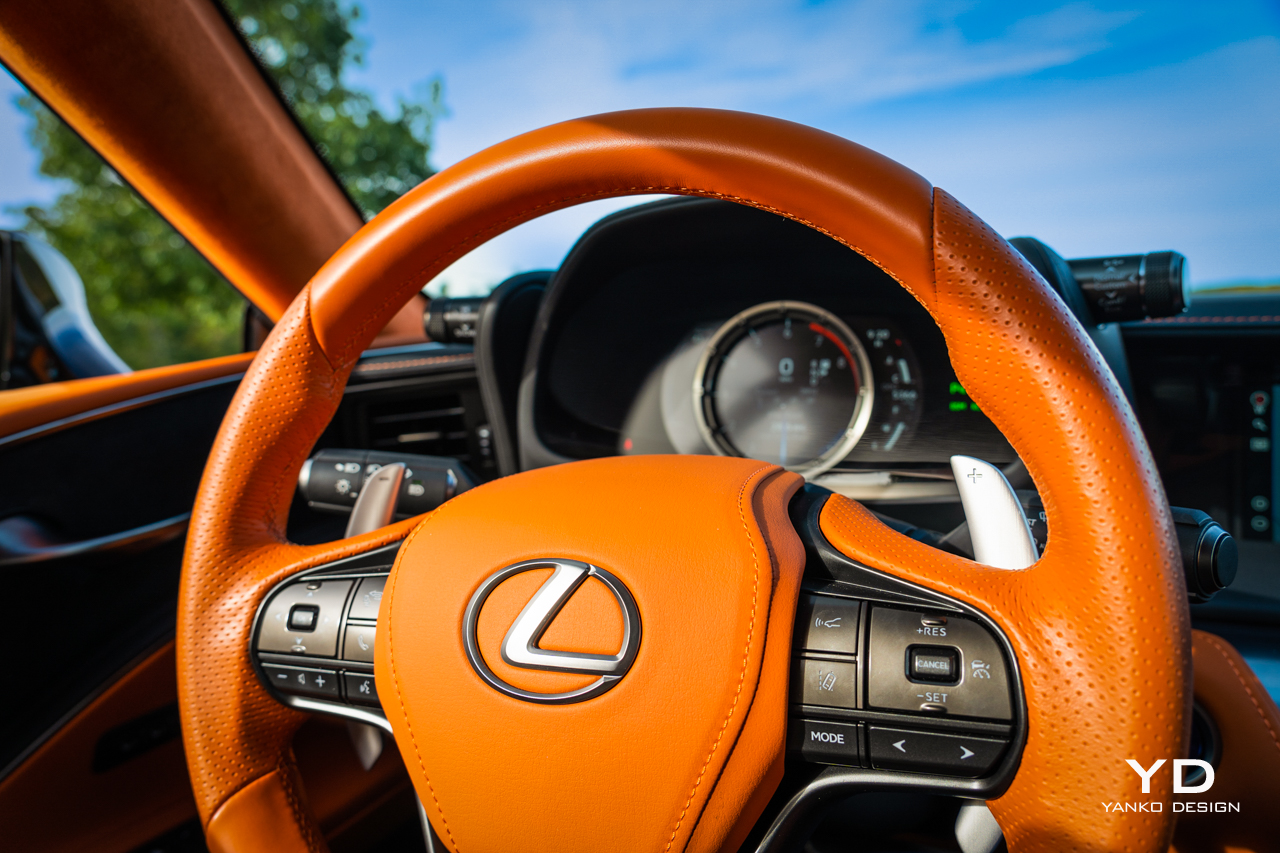
Pricing and options
A base LC 500h starts at $99,050, but the example you see here came courtesy of Lexus’ new Bespoke Build program, which adds a strong dose of personalization to the mix, crucial in the high-stakes luxury segment. With Bespoke Build, you have a much broader selection of interior colors from which to choose, a trio of wheelsets, plus additional options like blacking out the silver highlights. It’s not a full-on personalization program with an infinite number of paint hues and exotic hides, but for those wanting something special, it’s a big step forward.
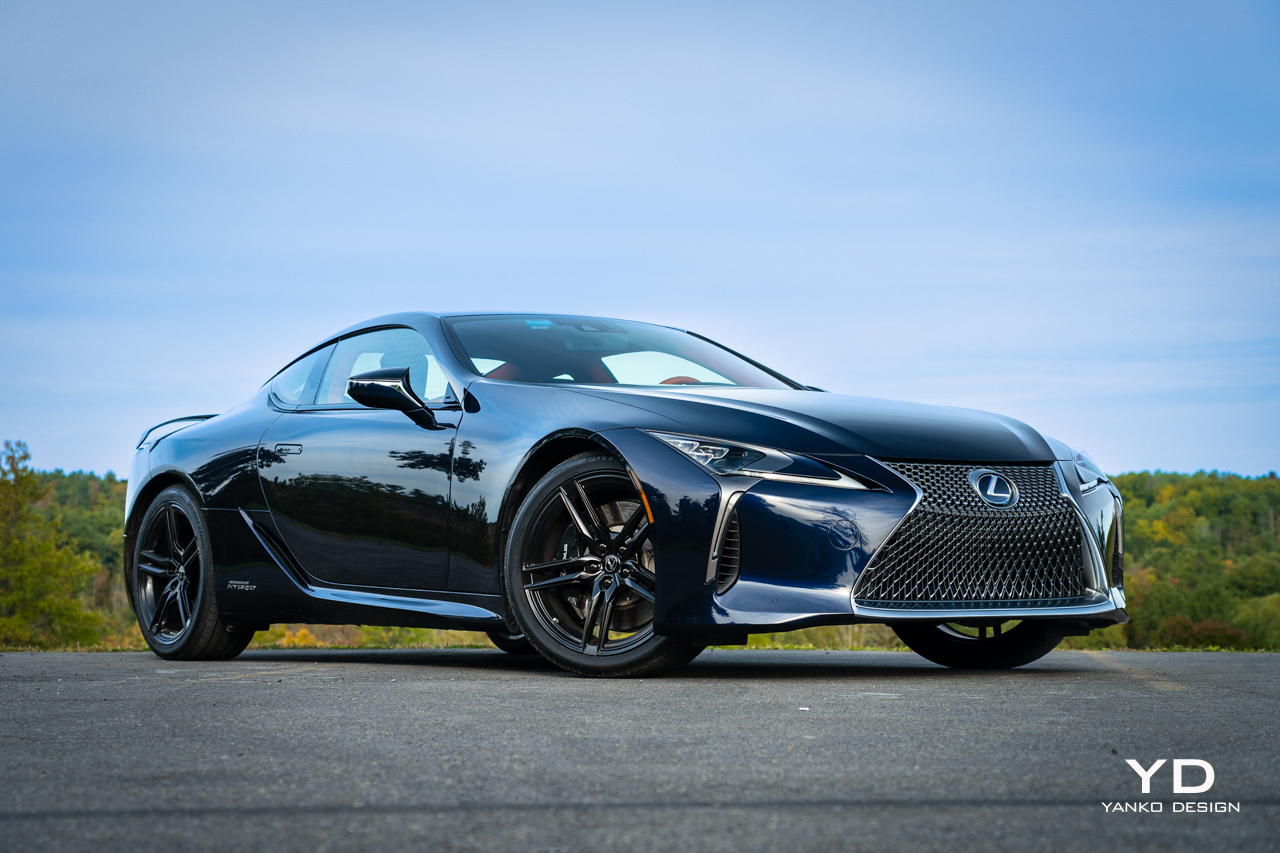
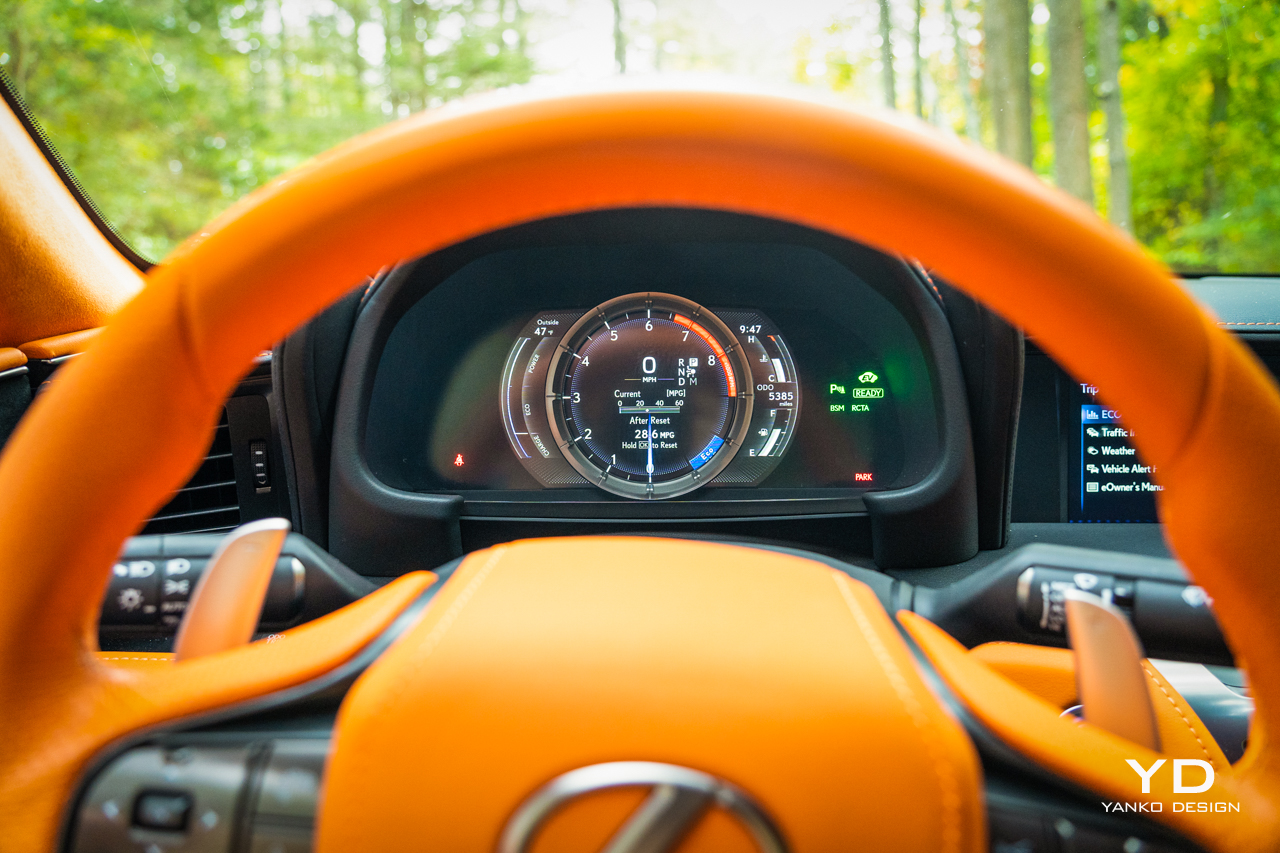
This car was coated in a lovely, dark shade called Nightfall Mica, with a custom Alcantara and leather interior called Manhattanhenge — presumably named after the deep, orange glow that bathes New York City twice a year. The blue over orange is a fantastic pairing and the result is a car that I adored looking at.
That Bespoke treatment costs $3,690, while the interior cost another $3,600. Other options on this car included $2,750 for that luscious rear wing, $1,800 for the black, 21-inch wheels, and $1,220 for the upgraded Mark Levinson sound system. Add a few other odds and ends, plus a $1,075 destination charge, and you’re looking at a total cost of $116,535.
